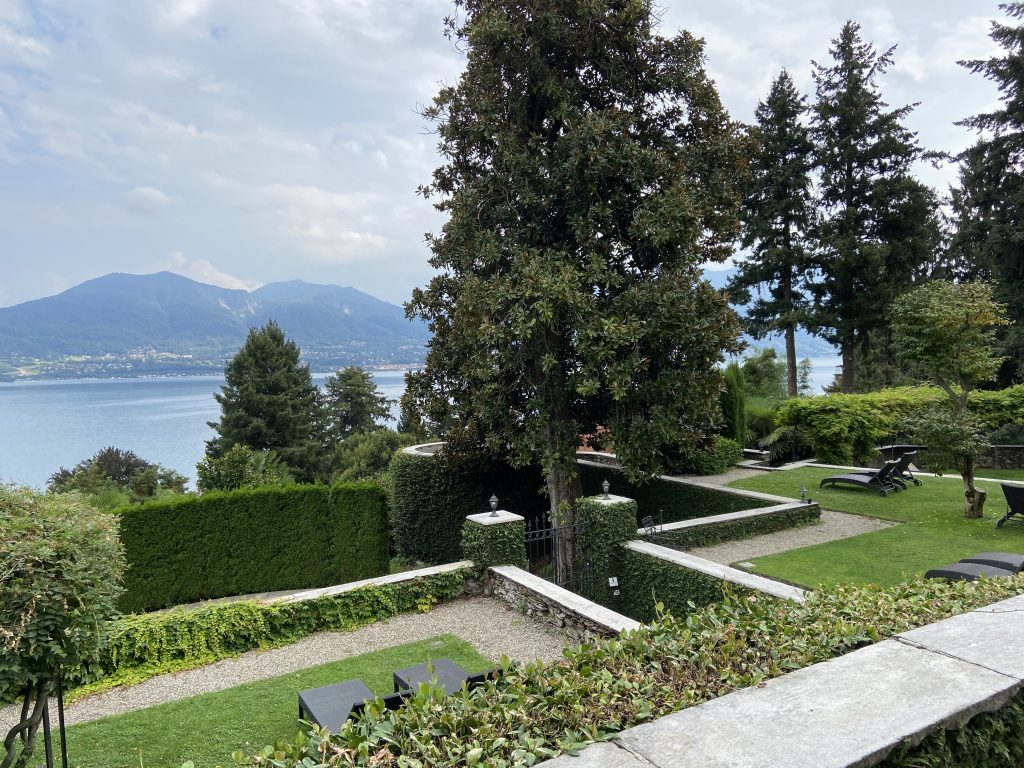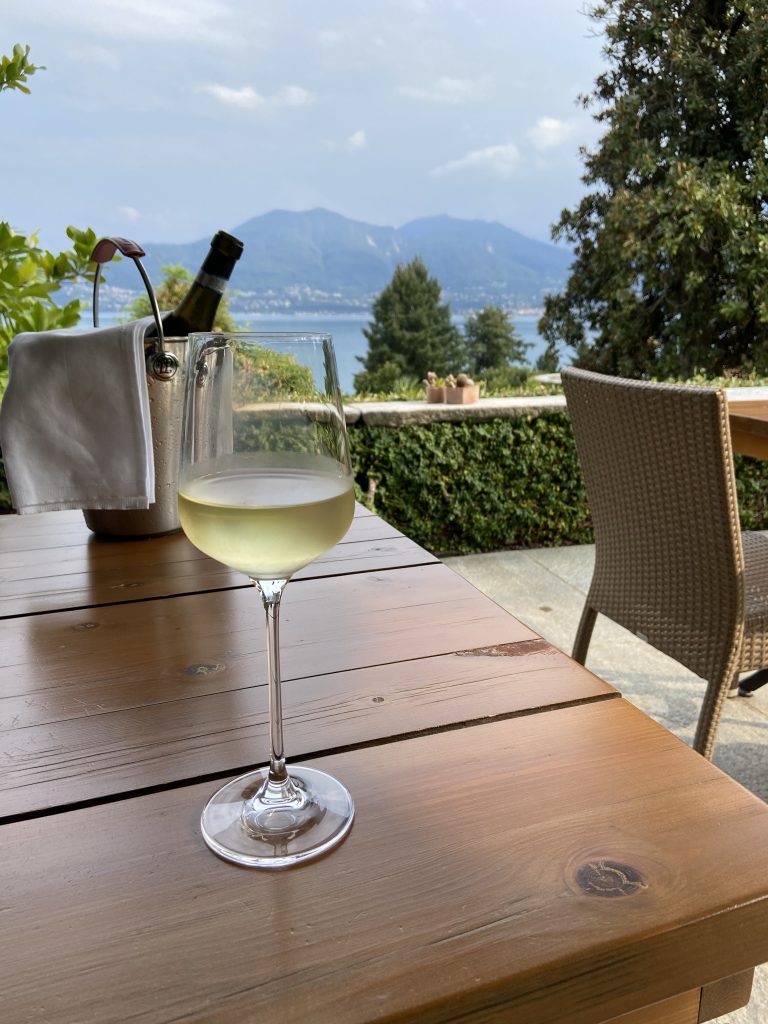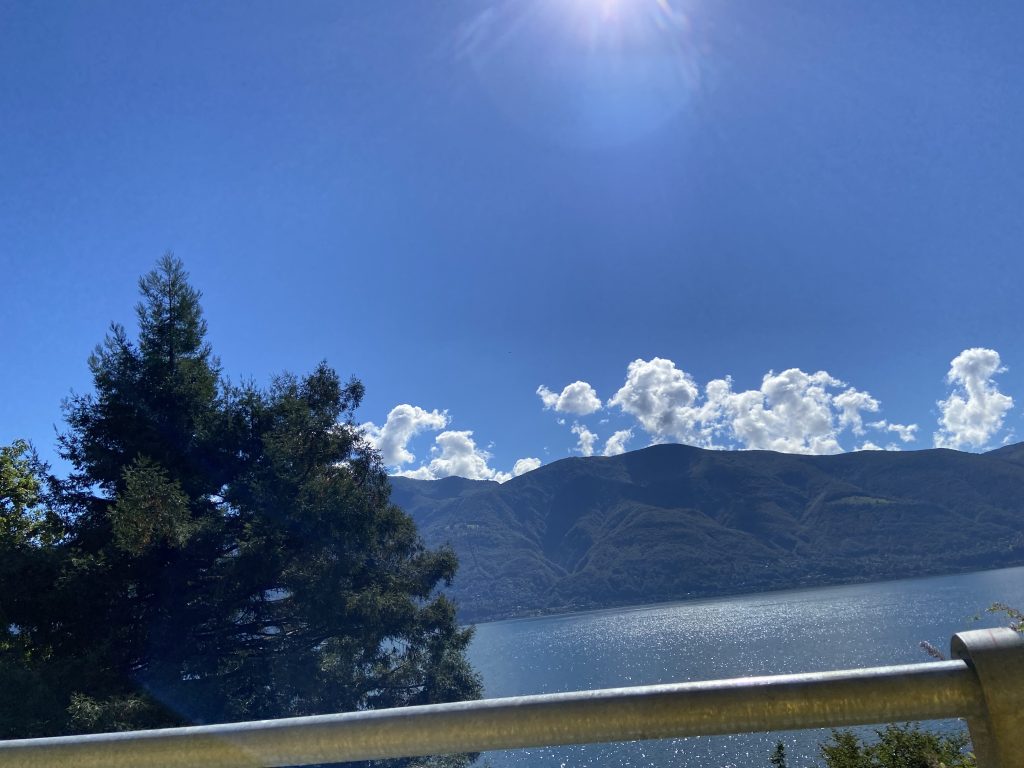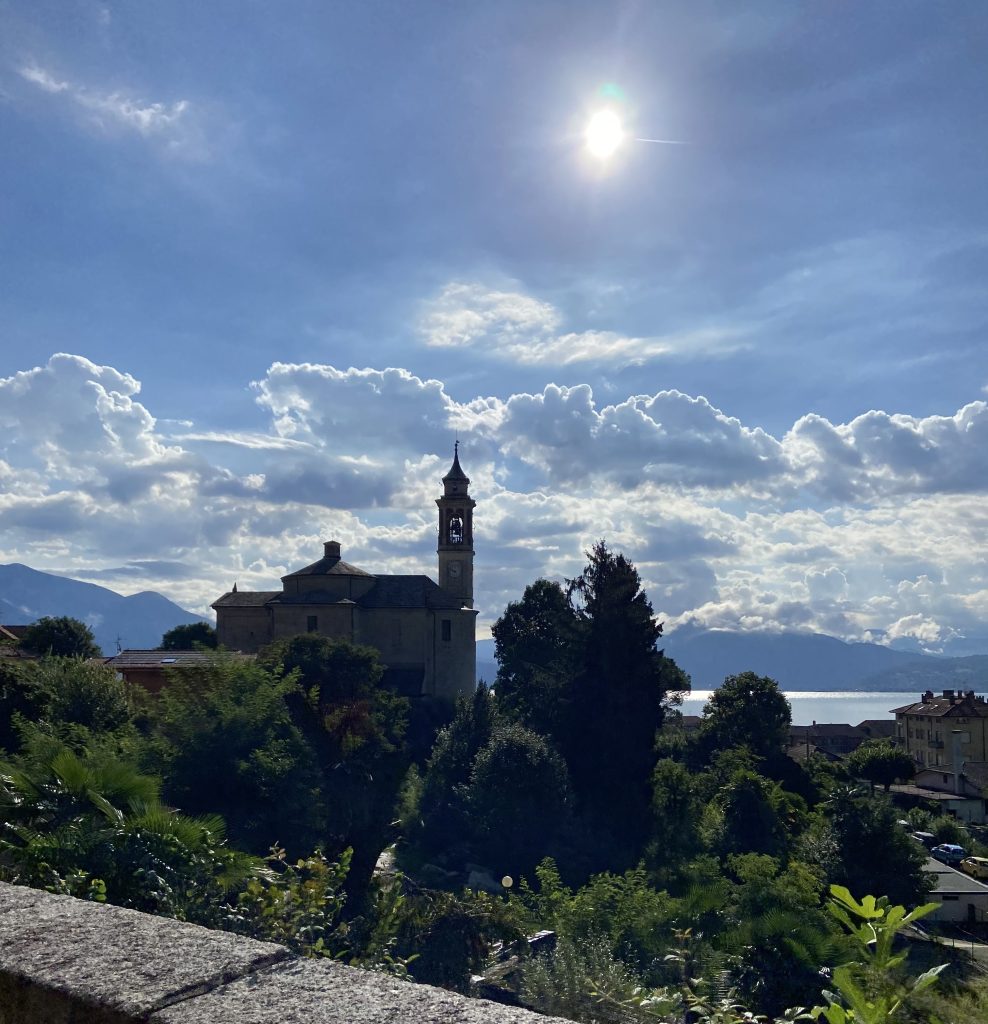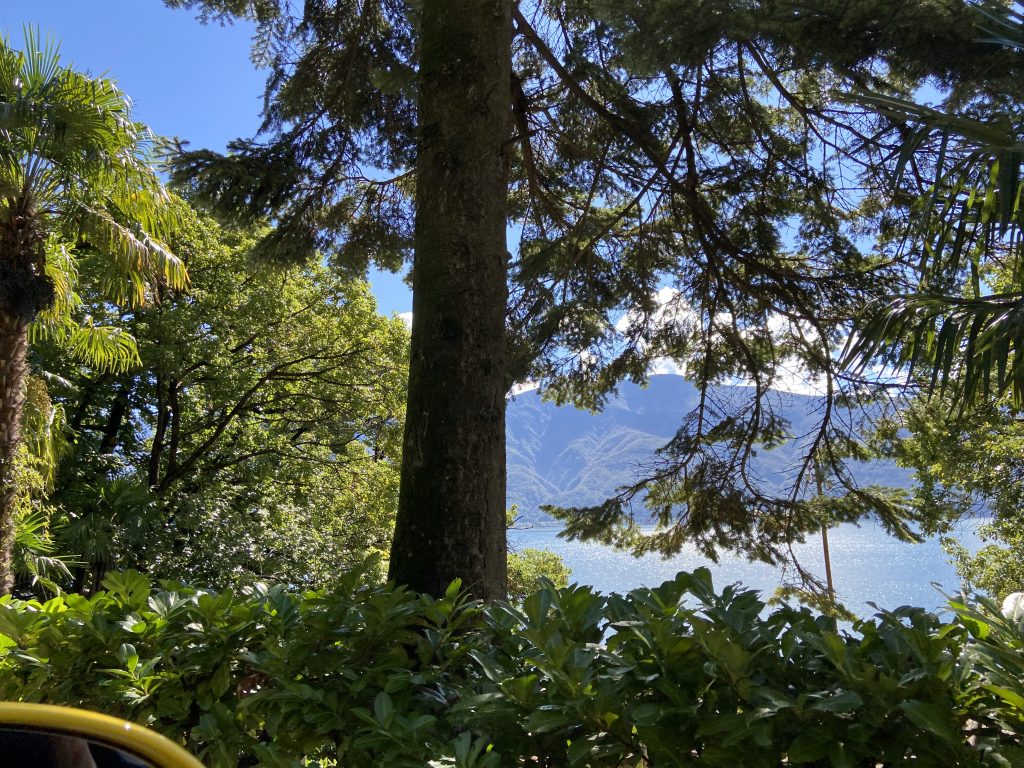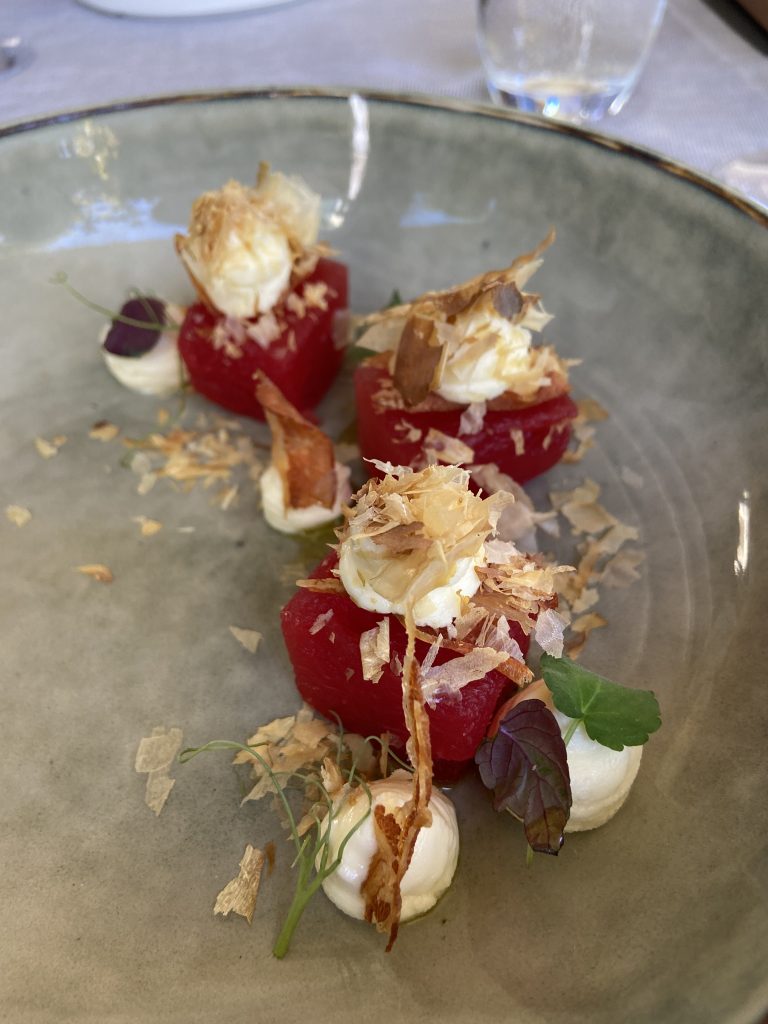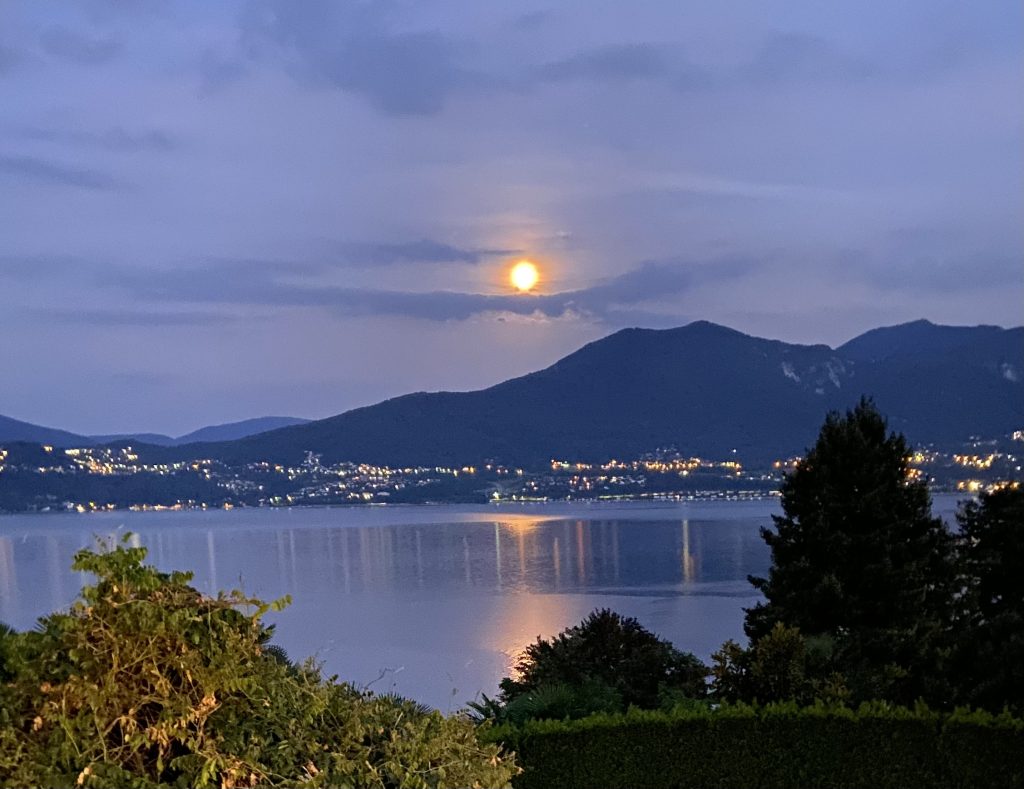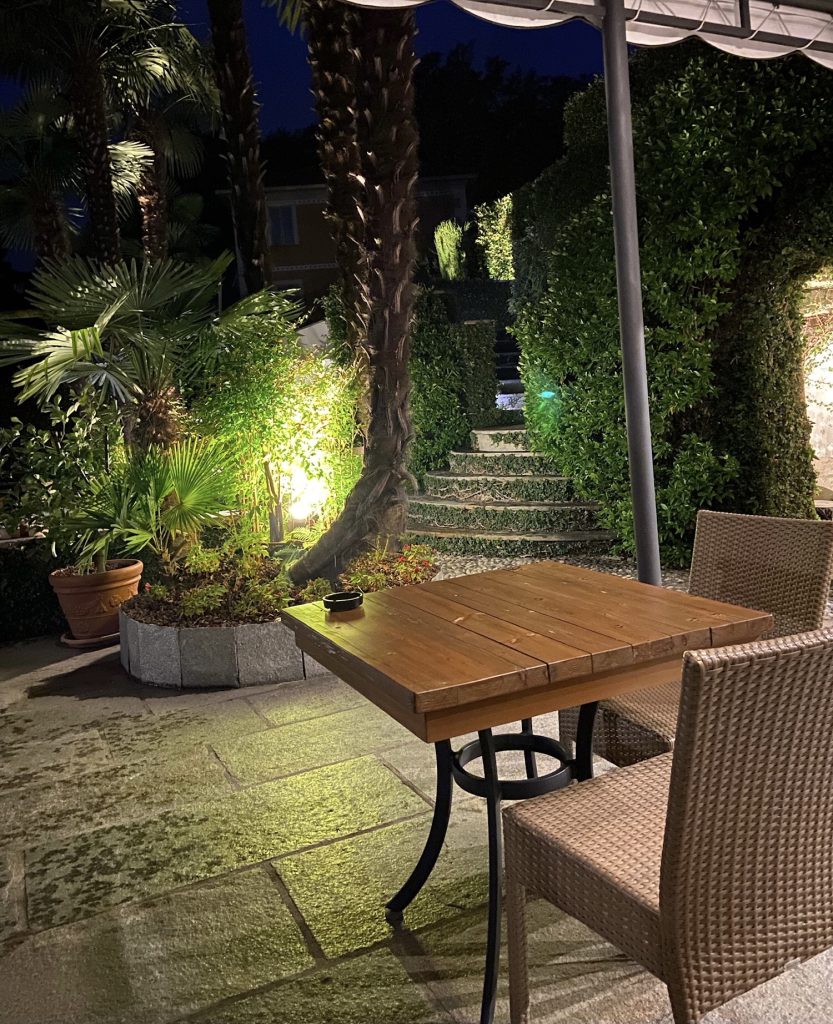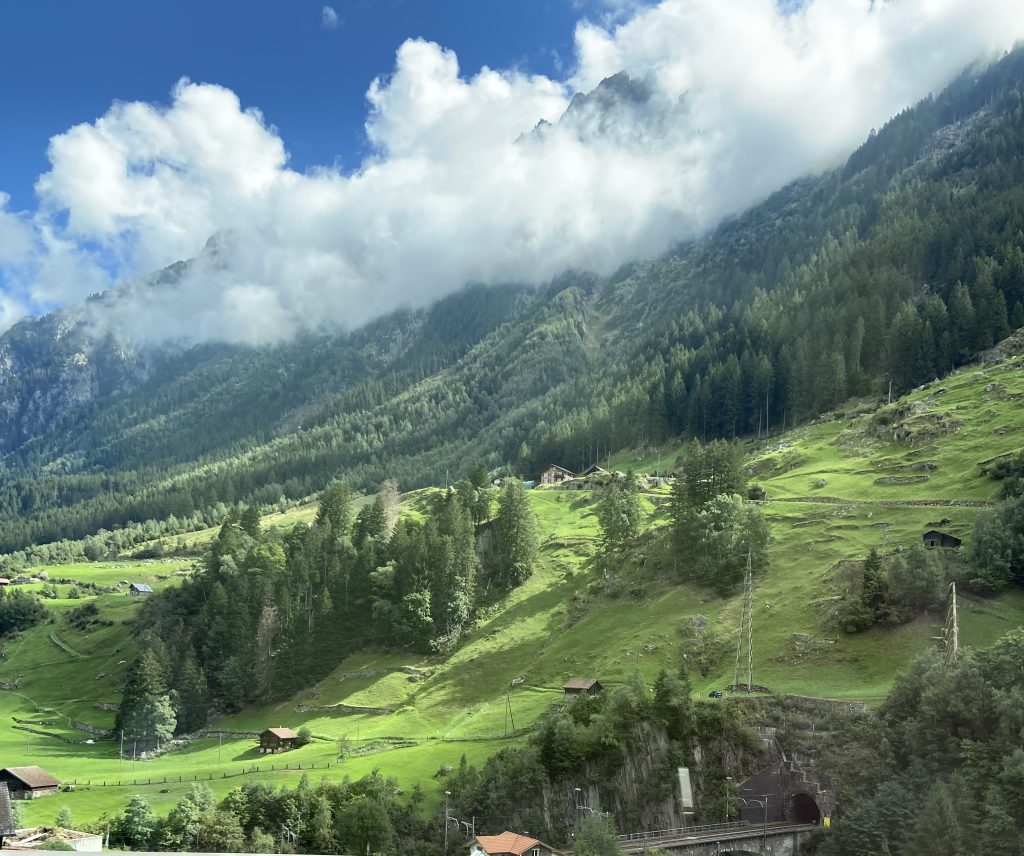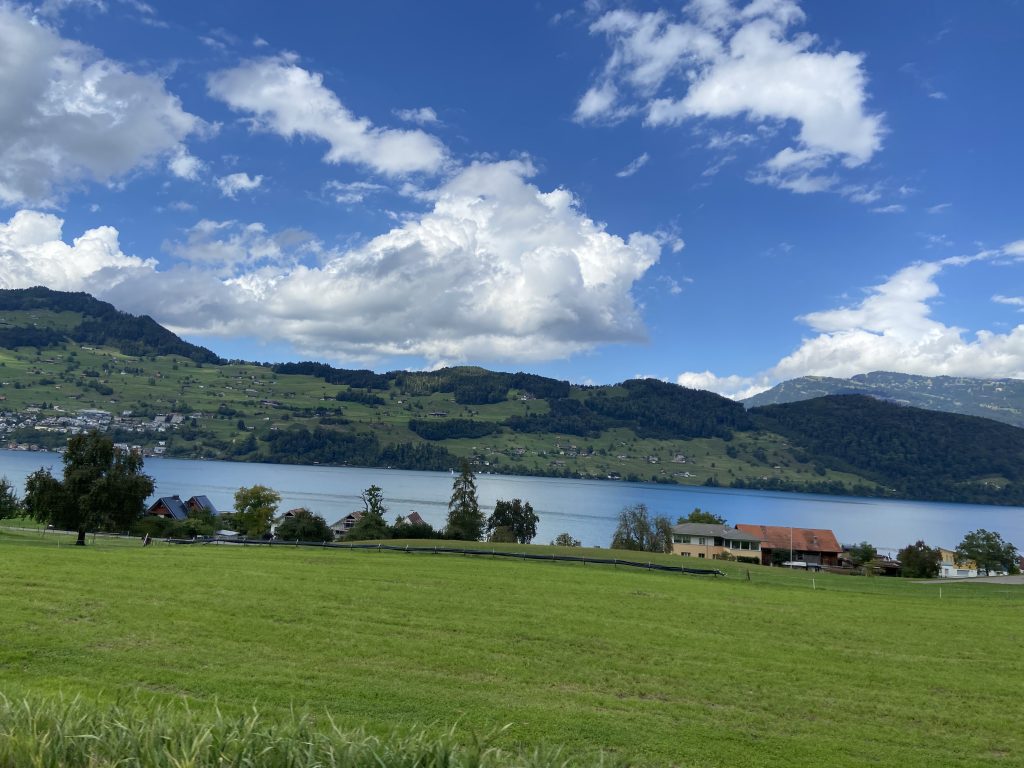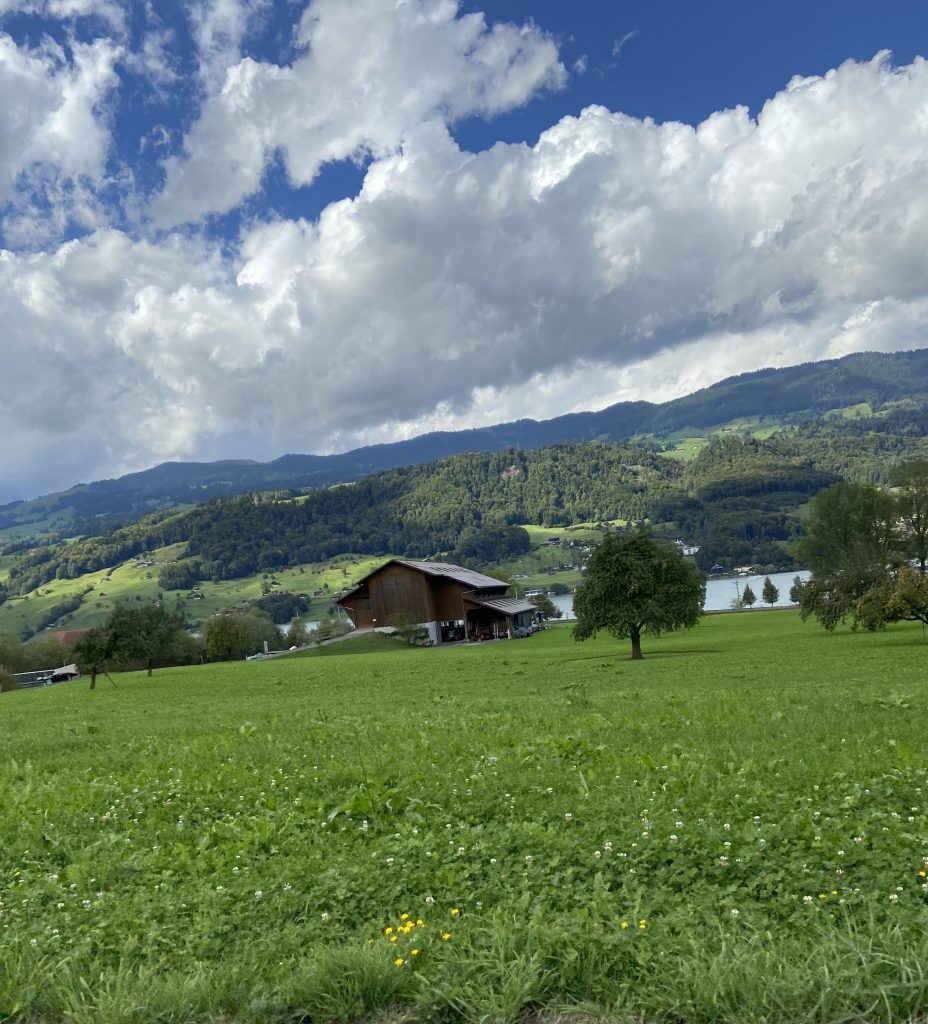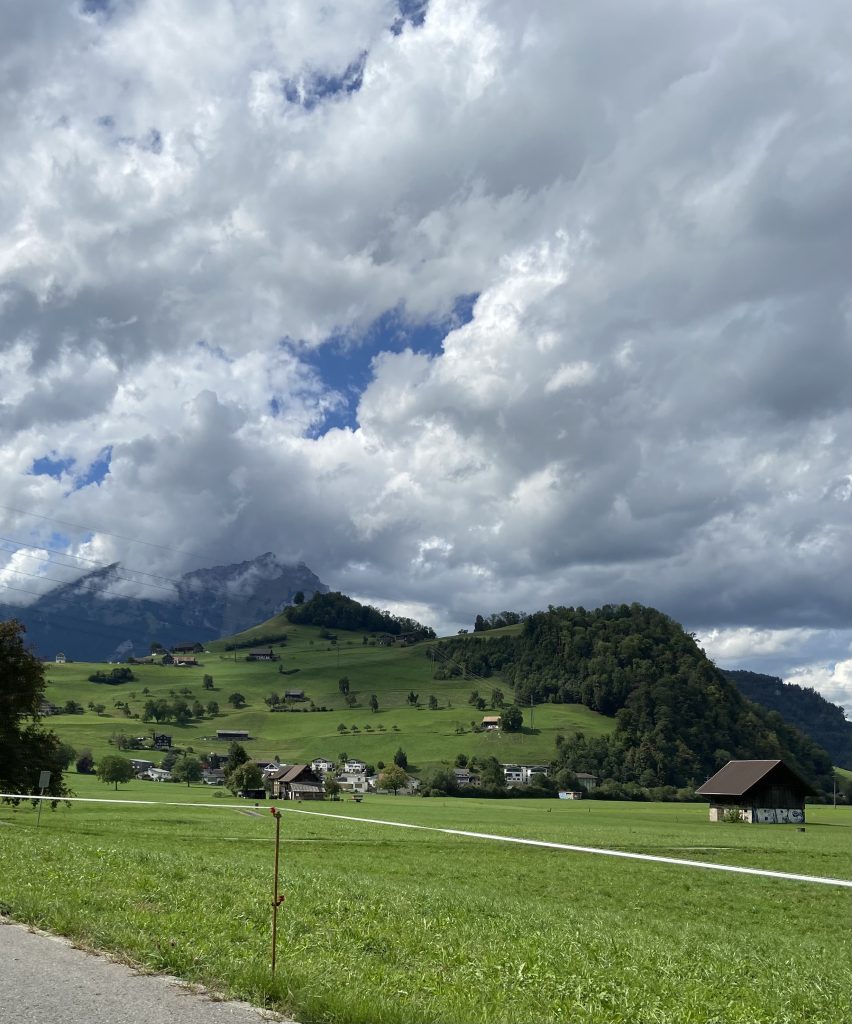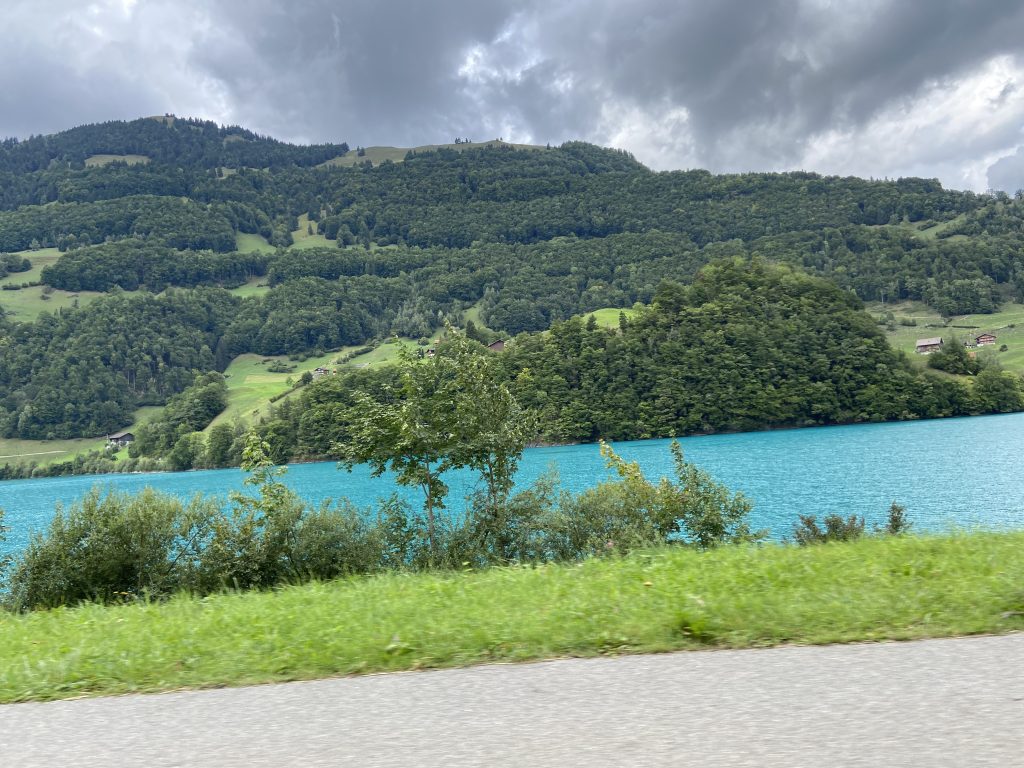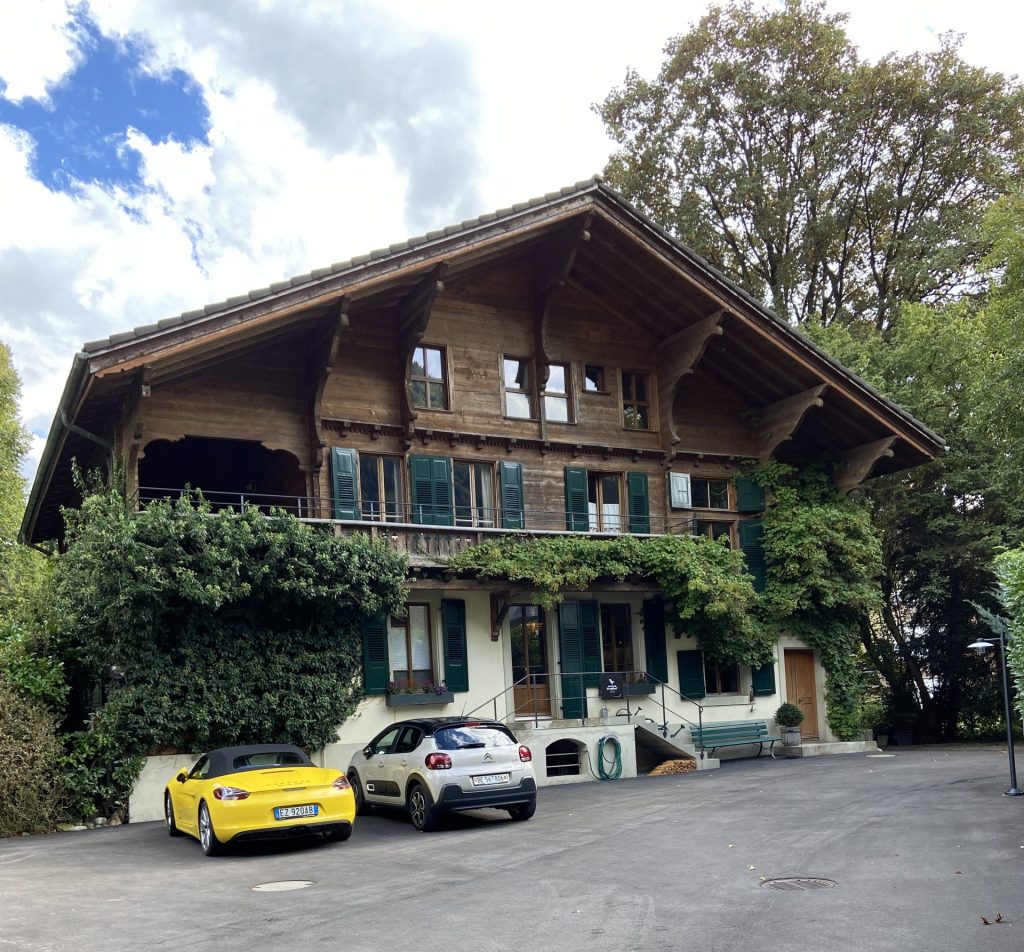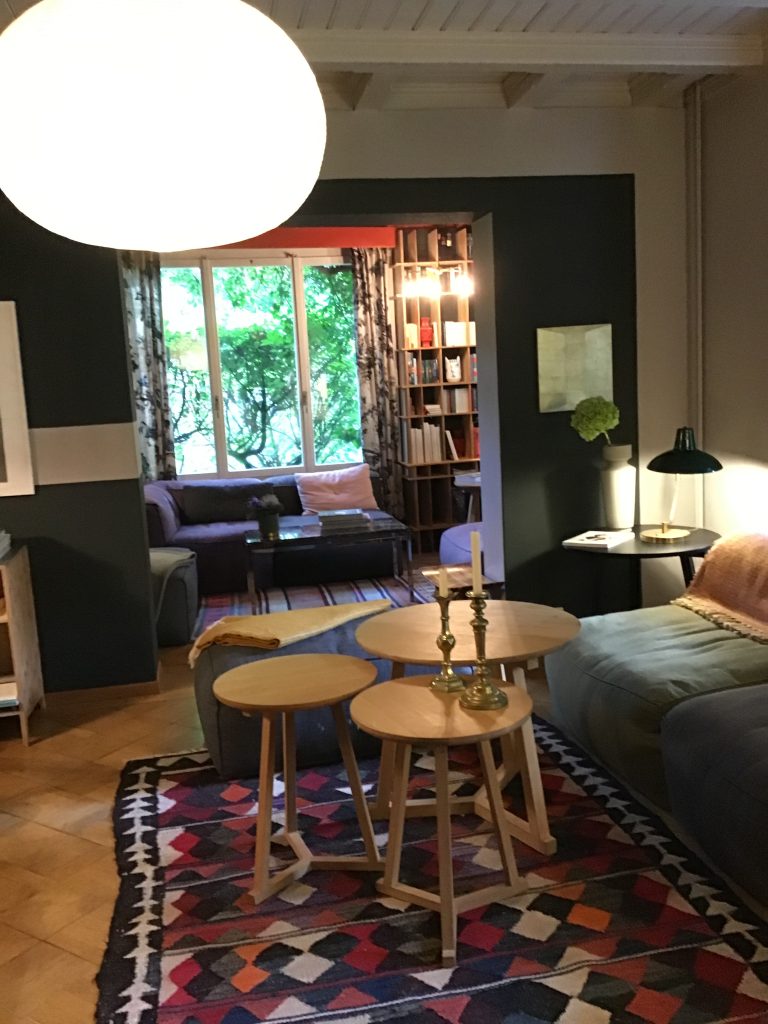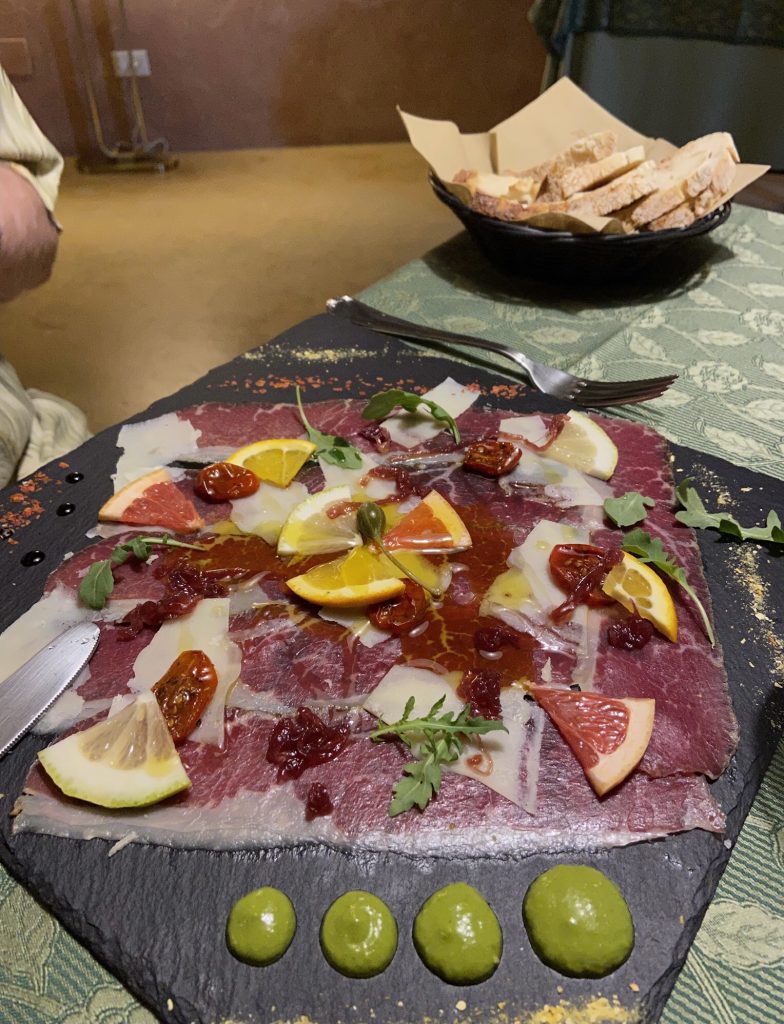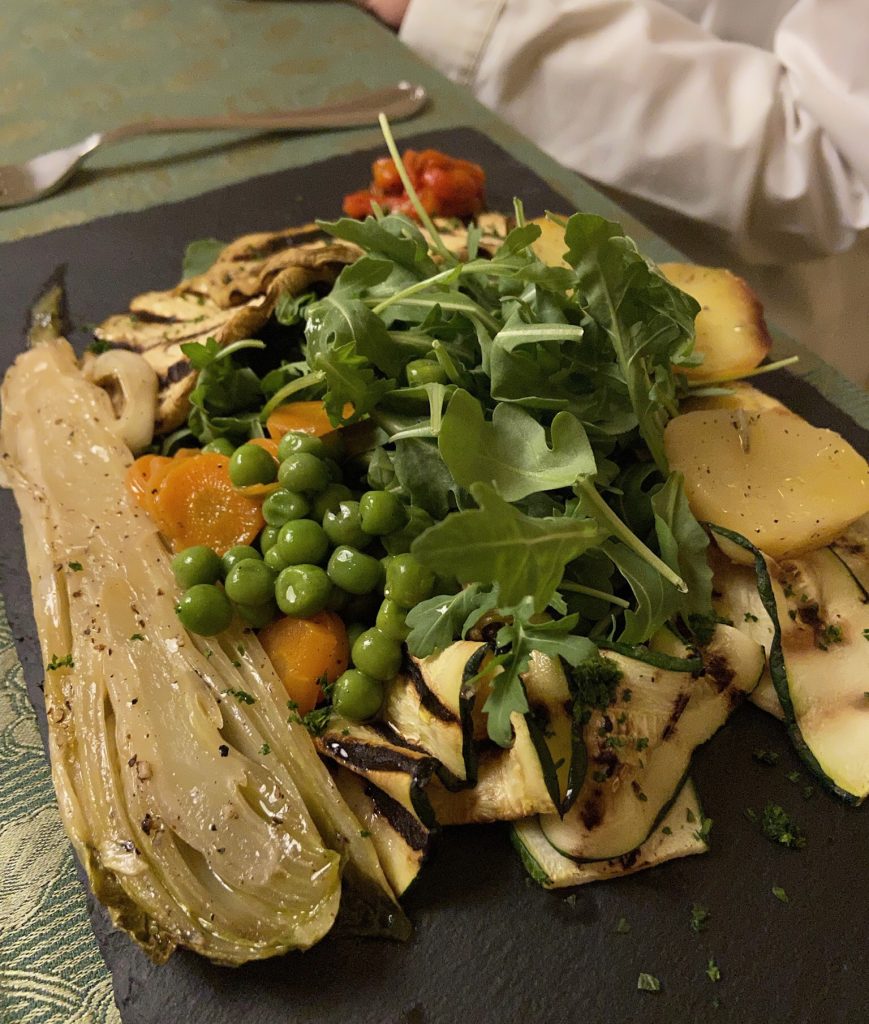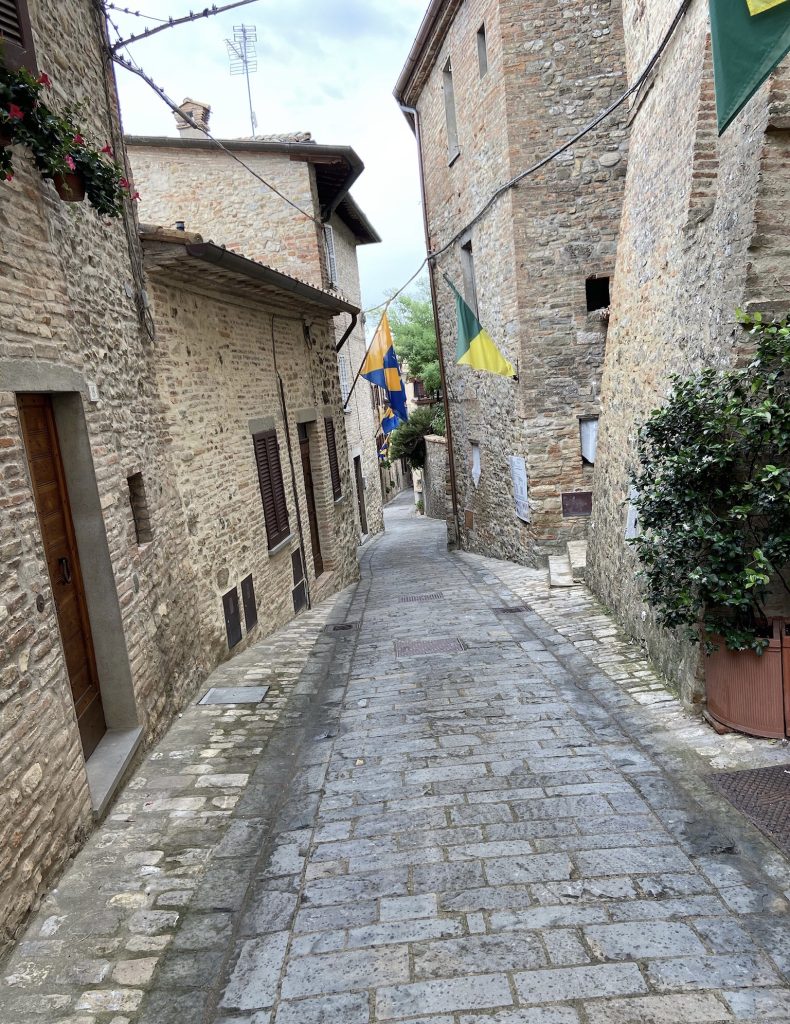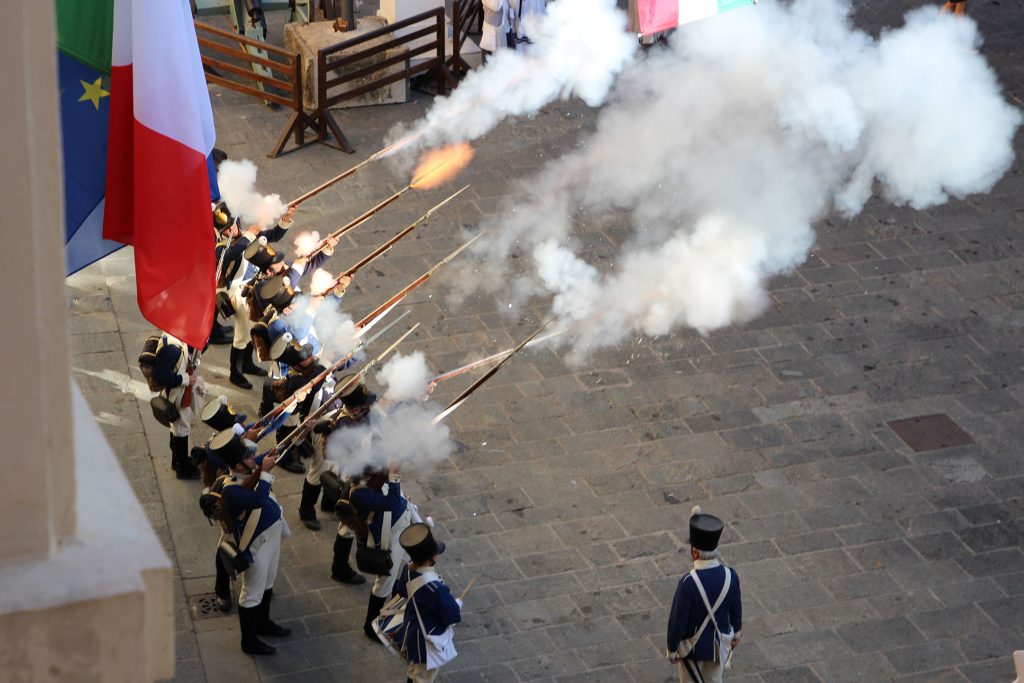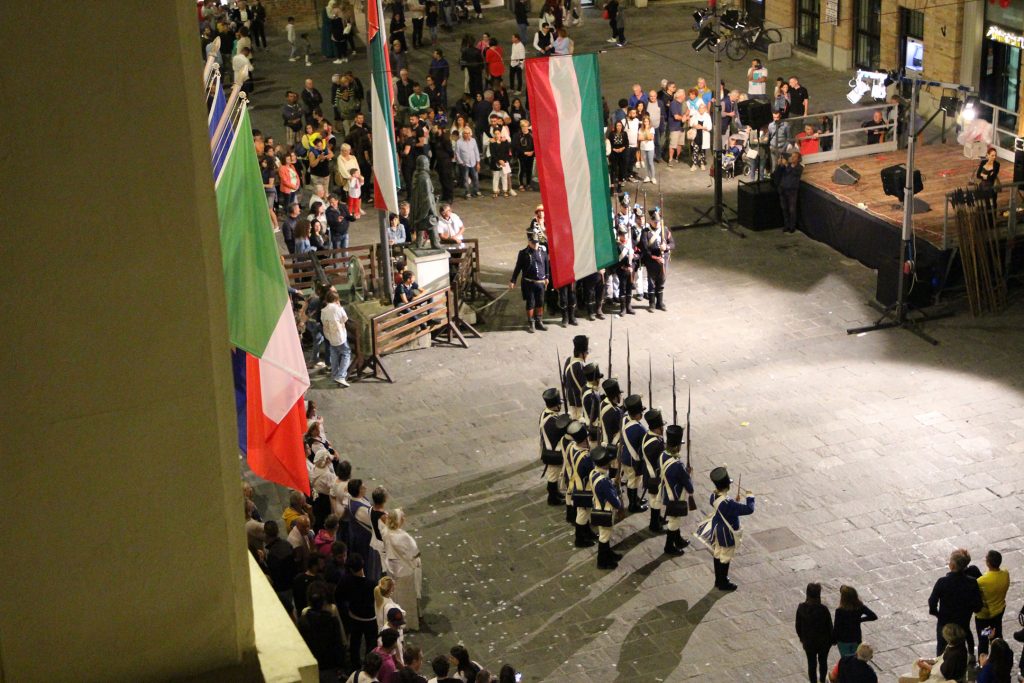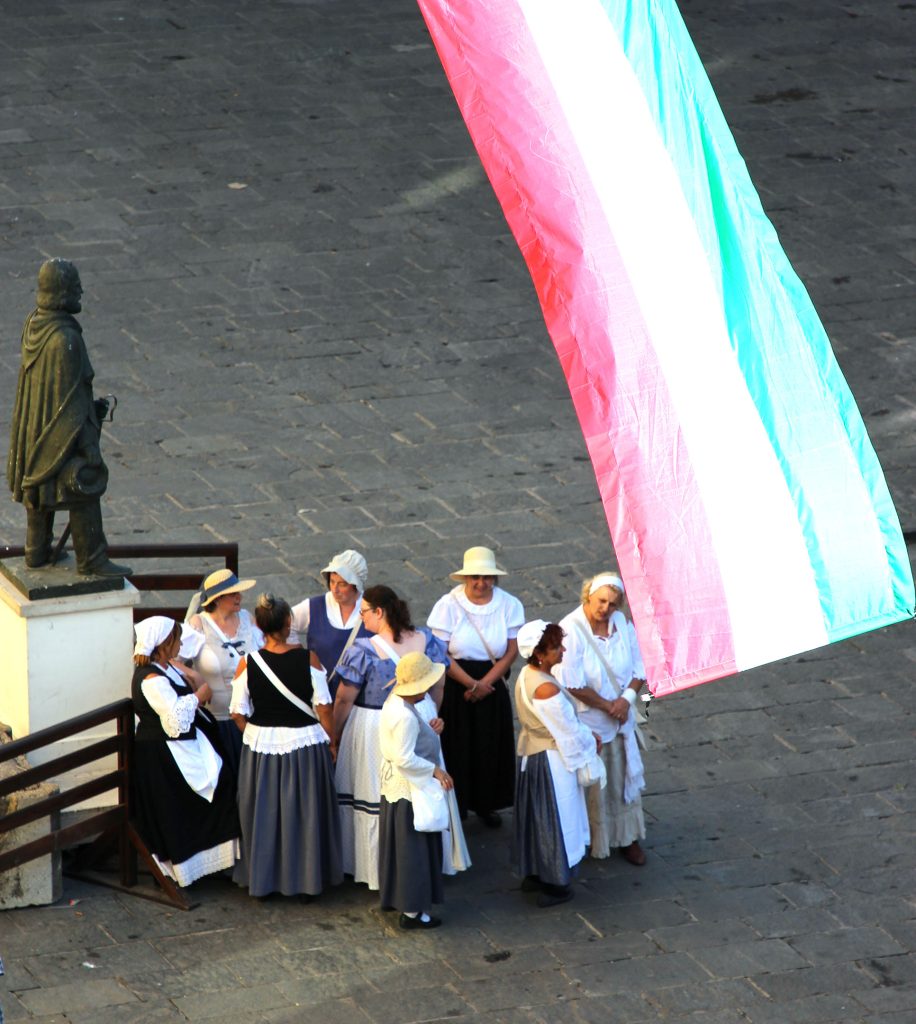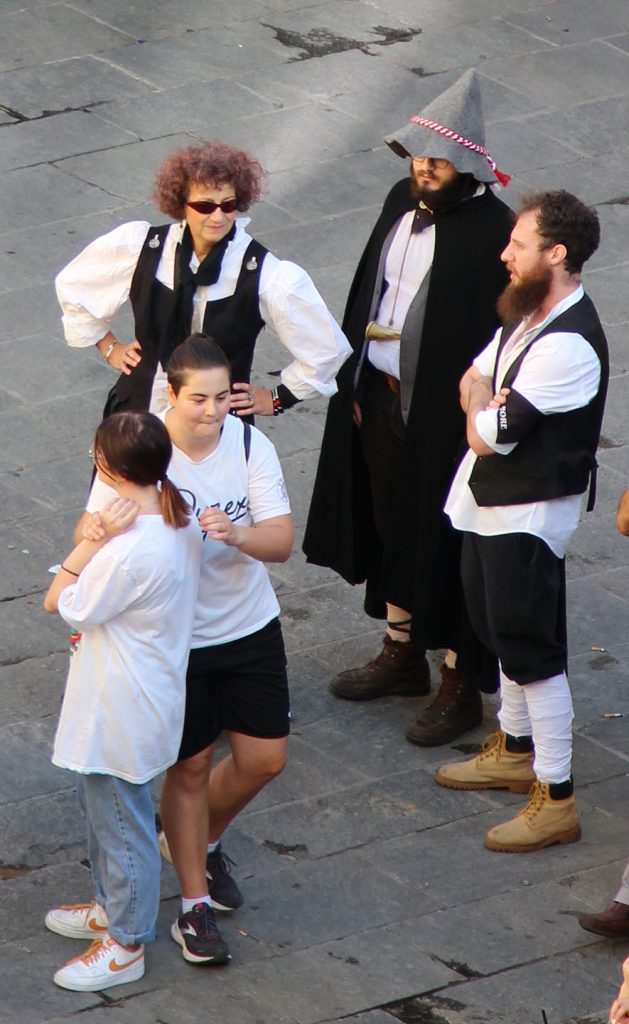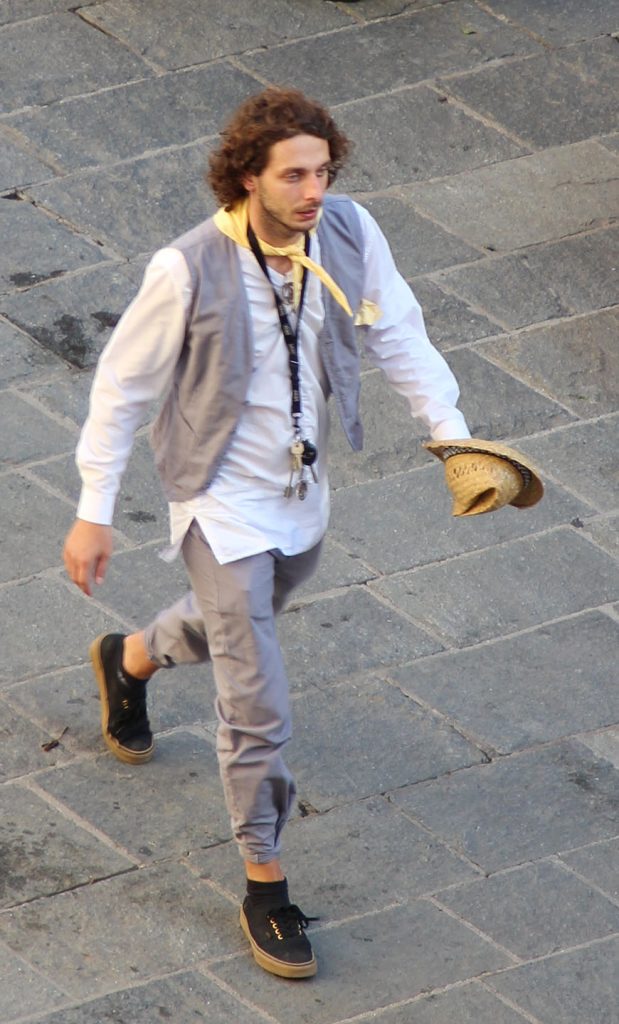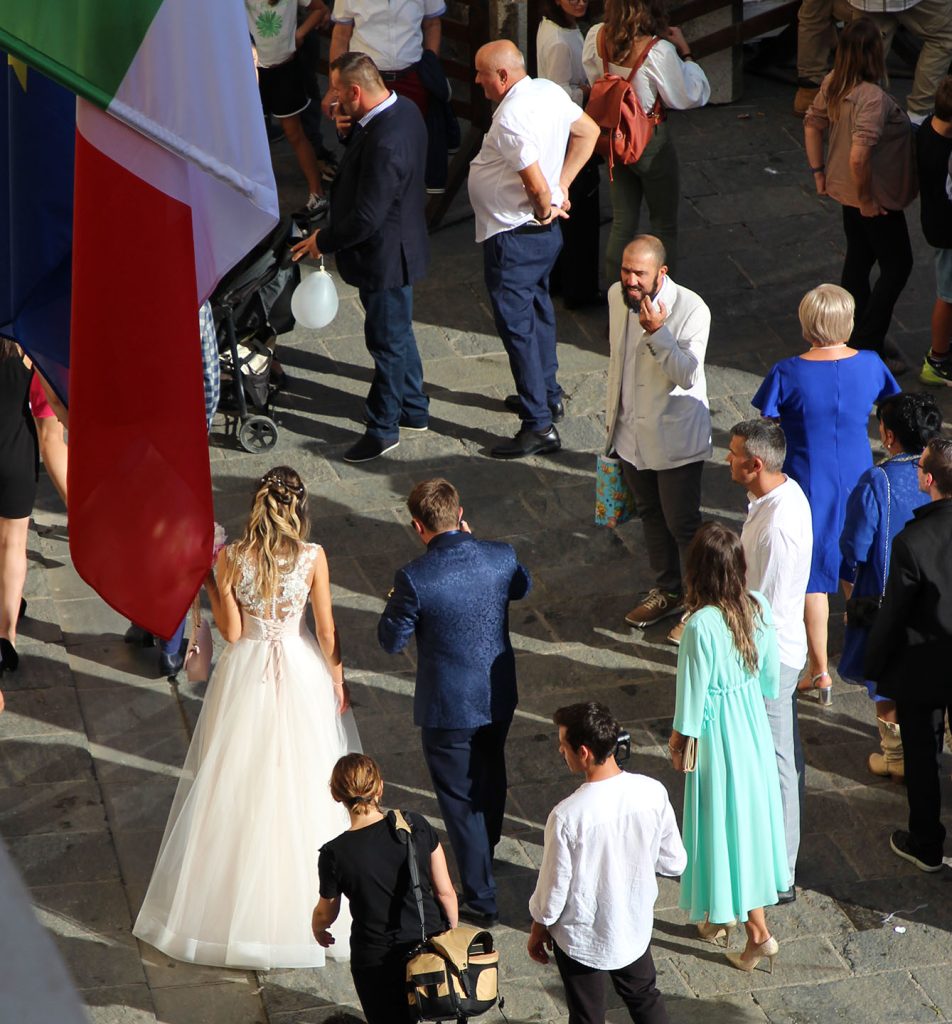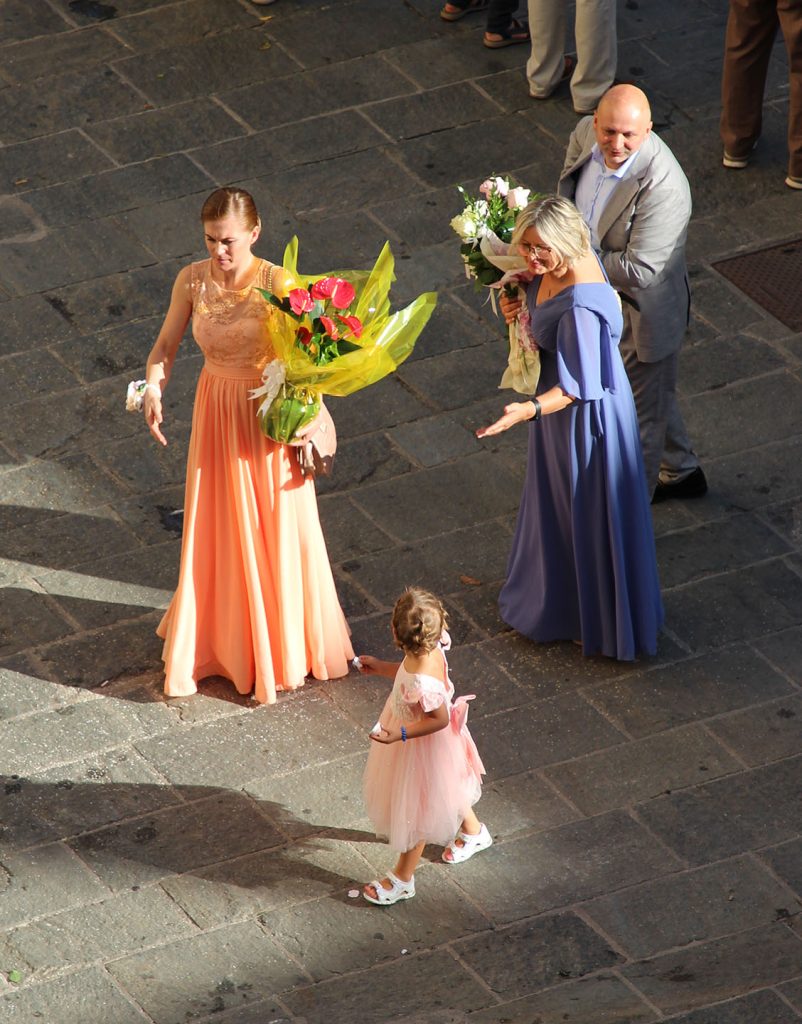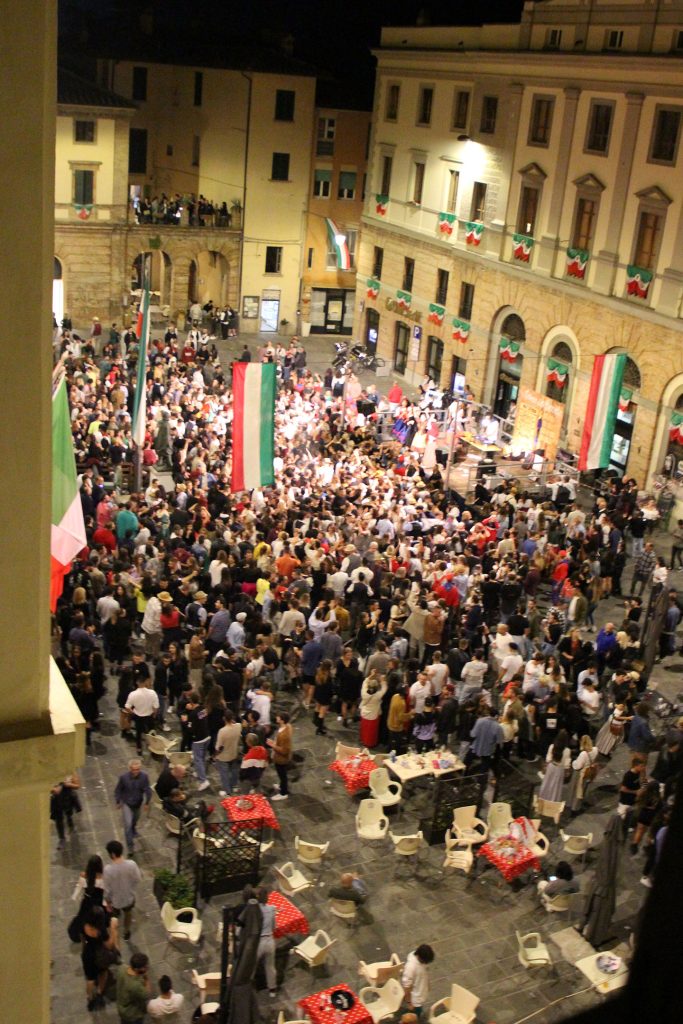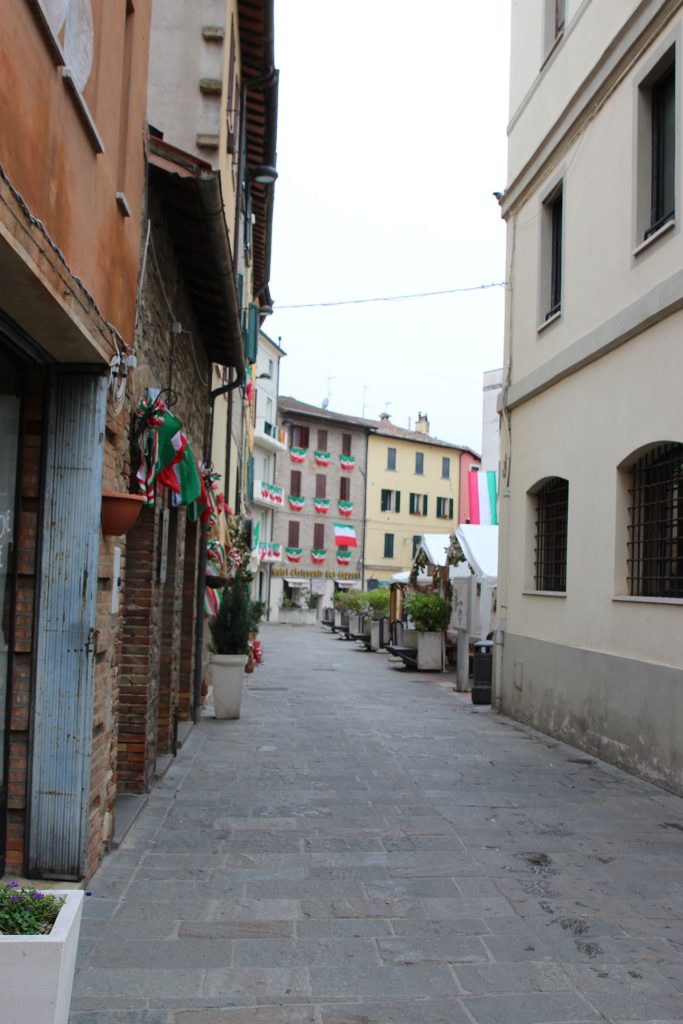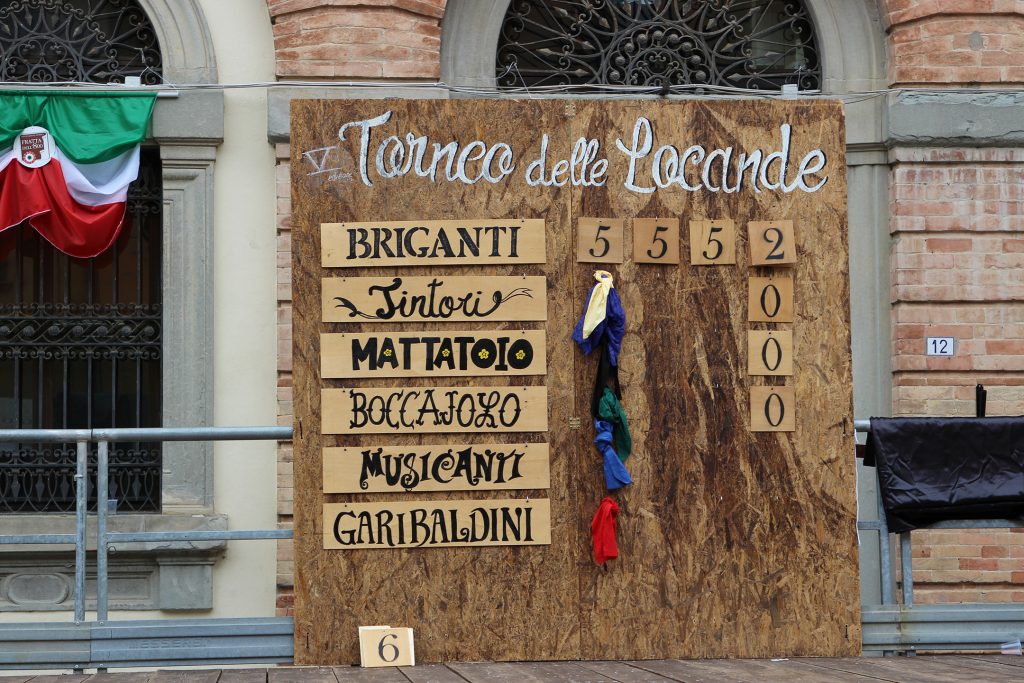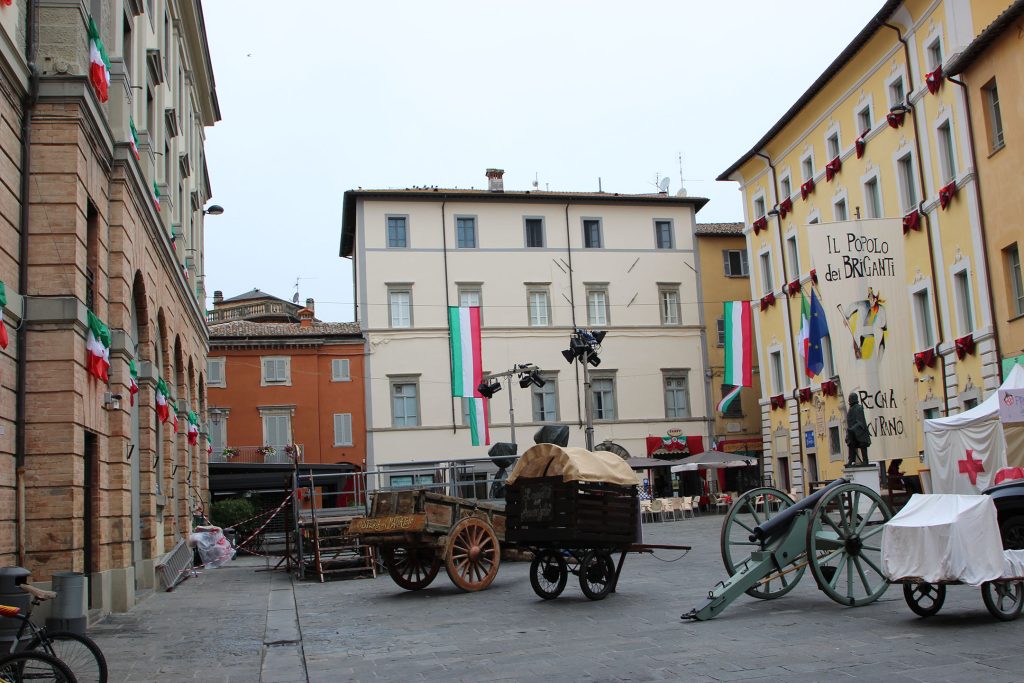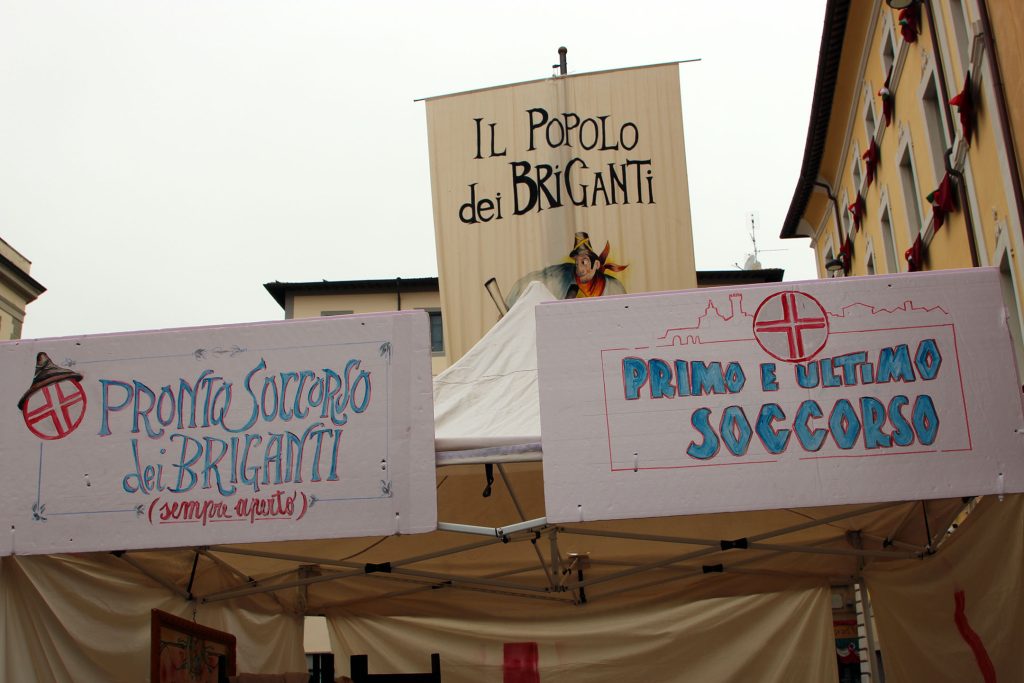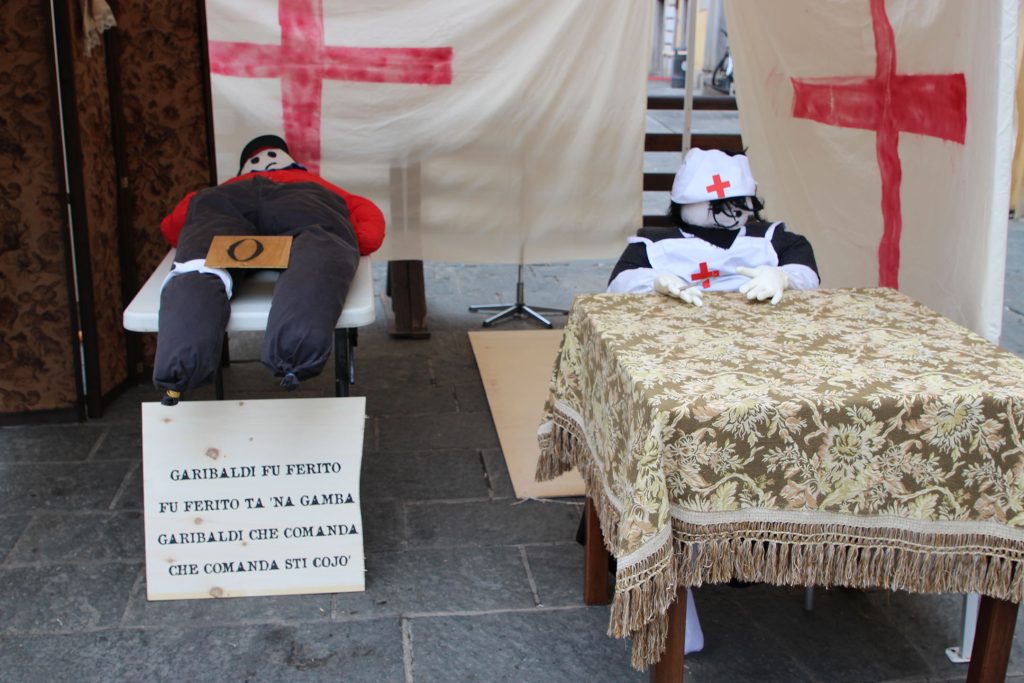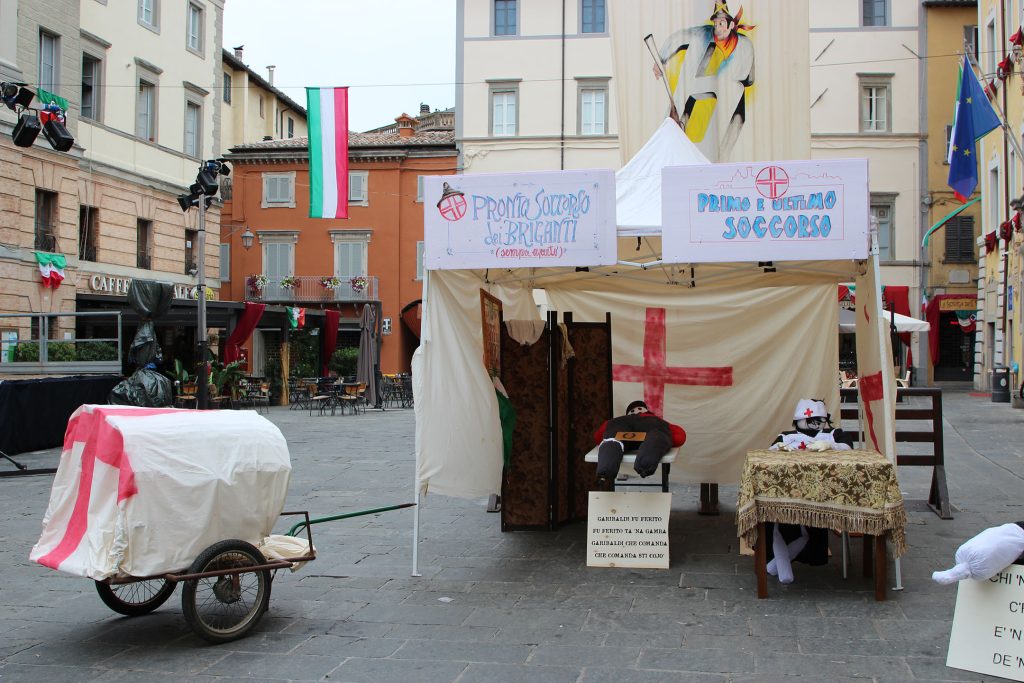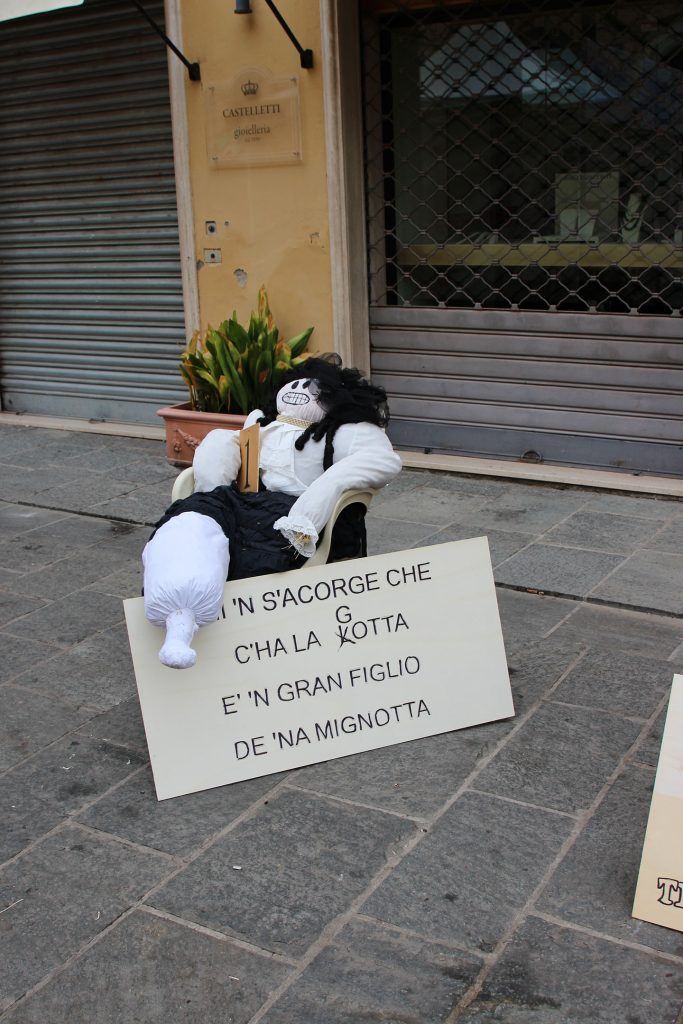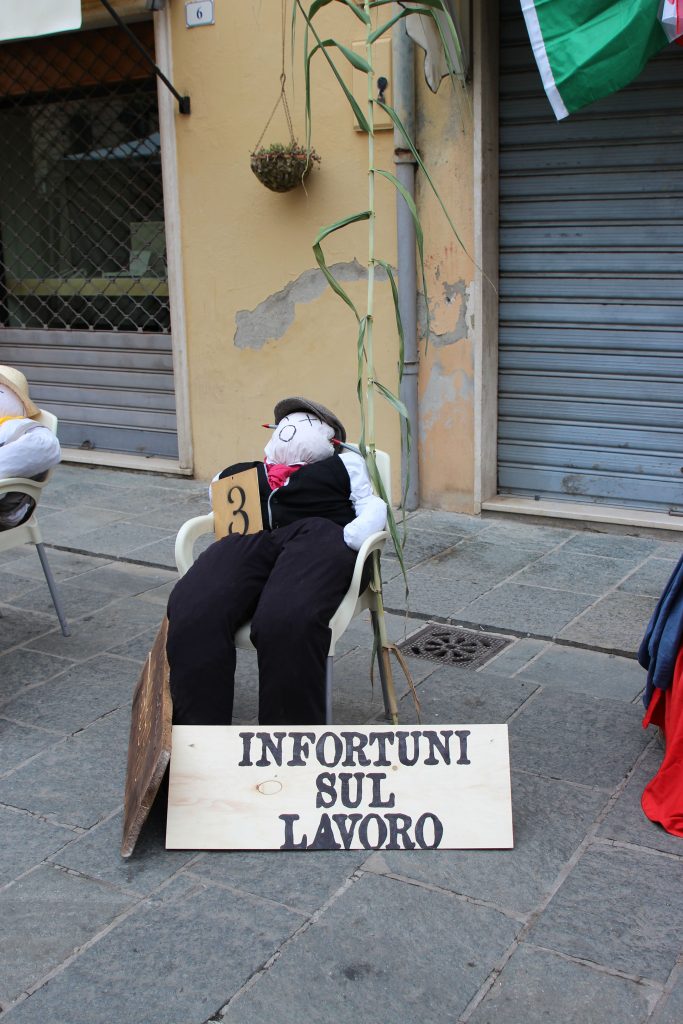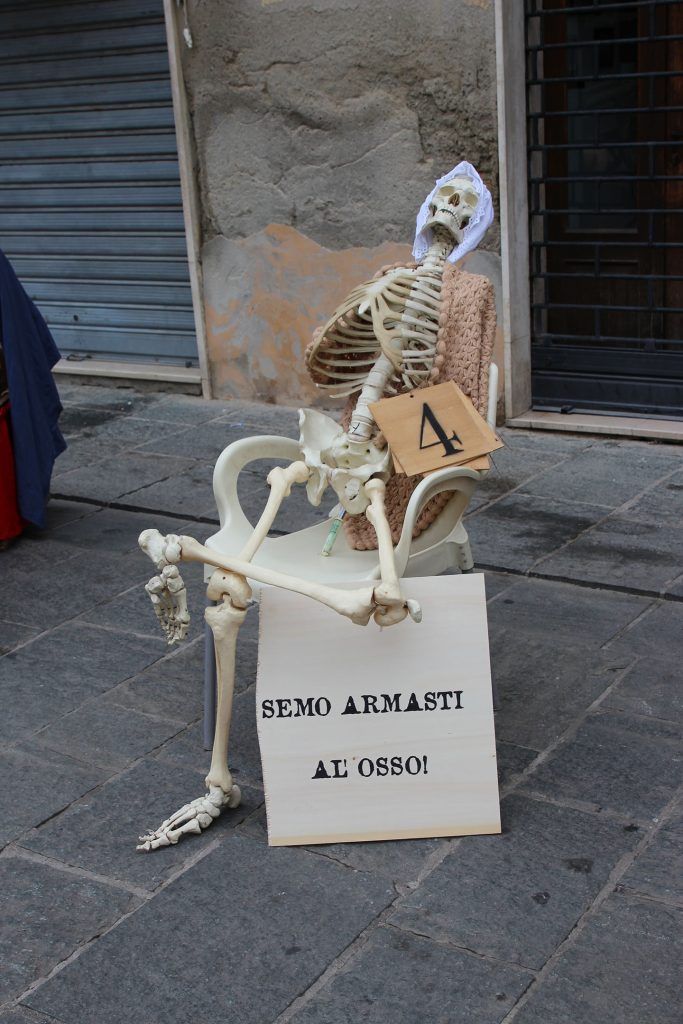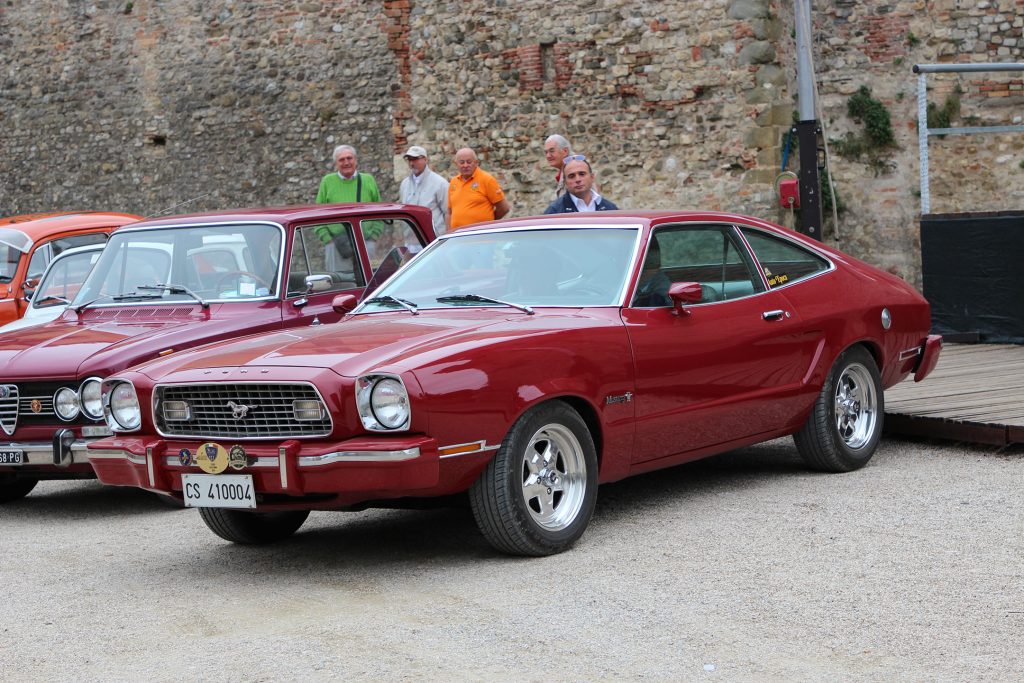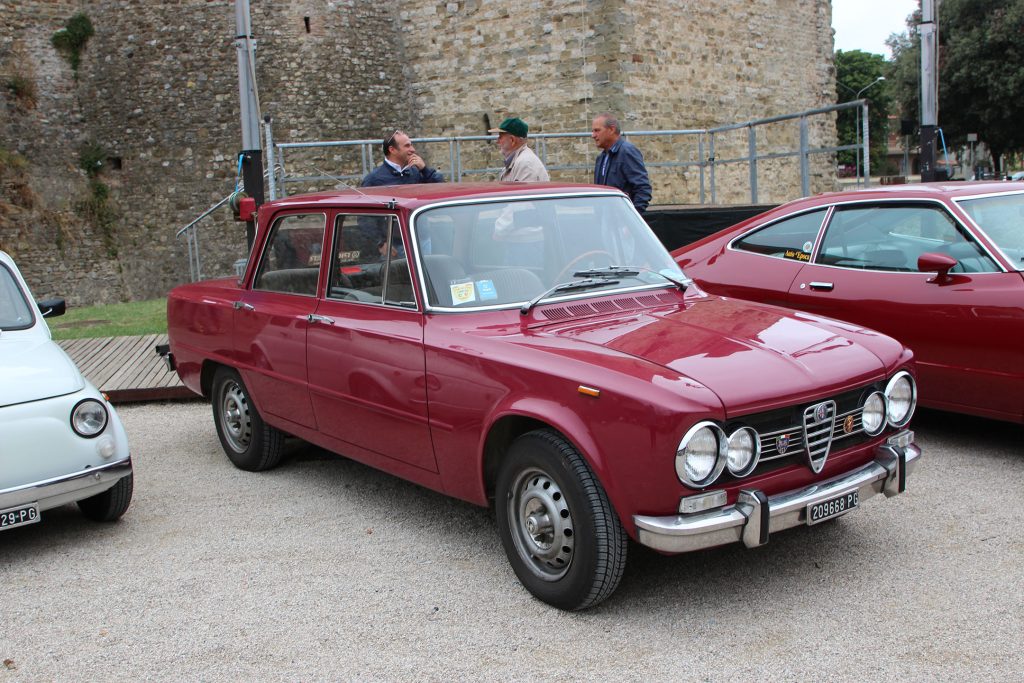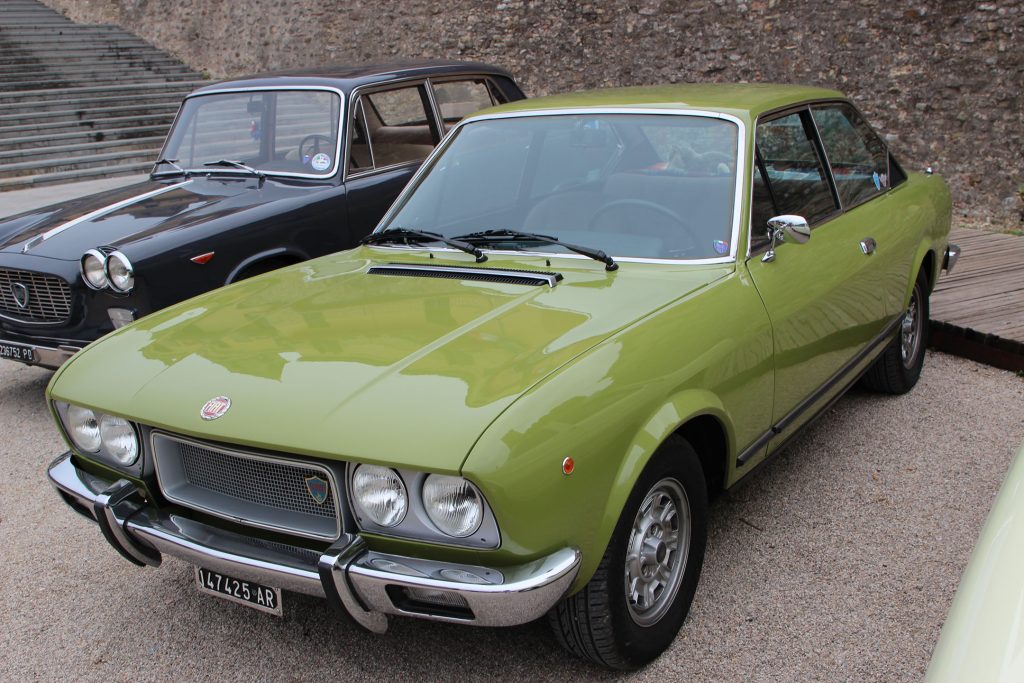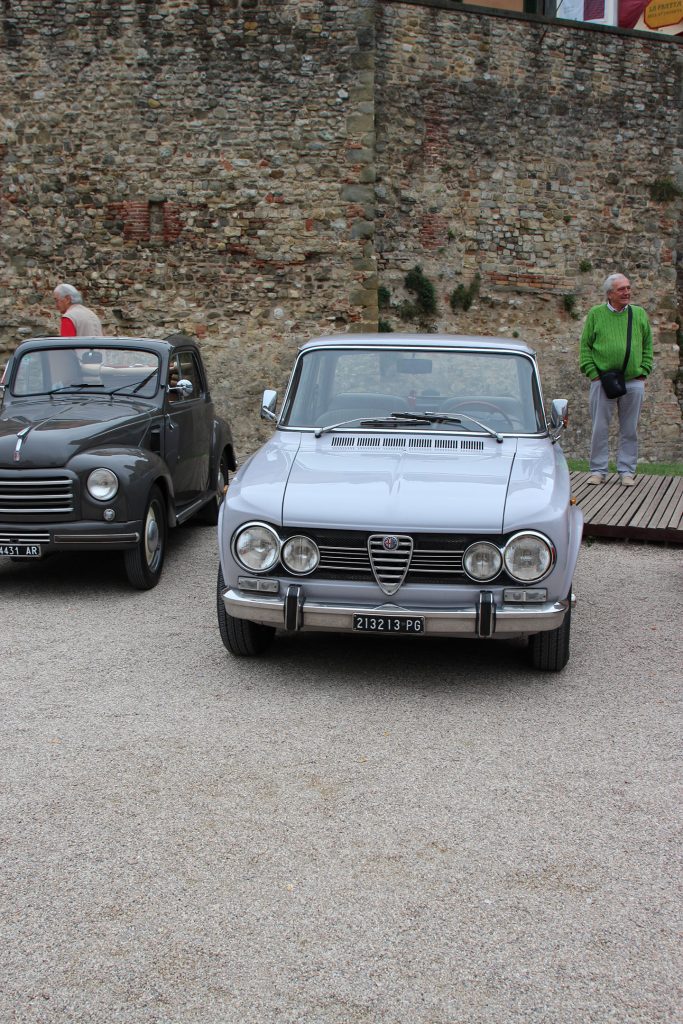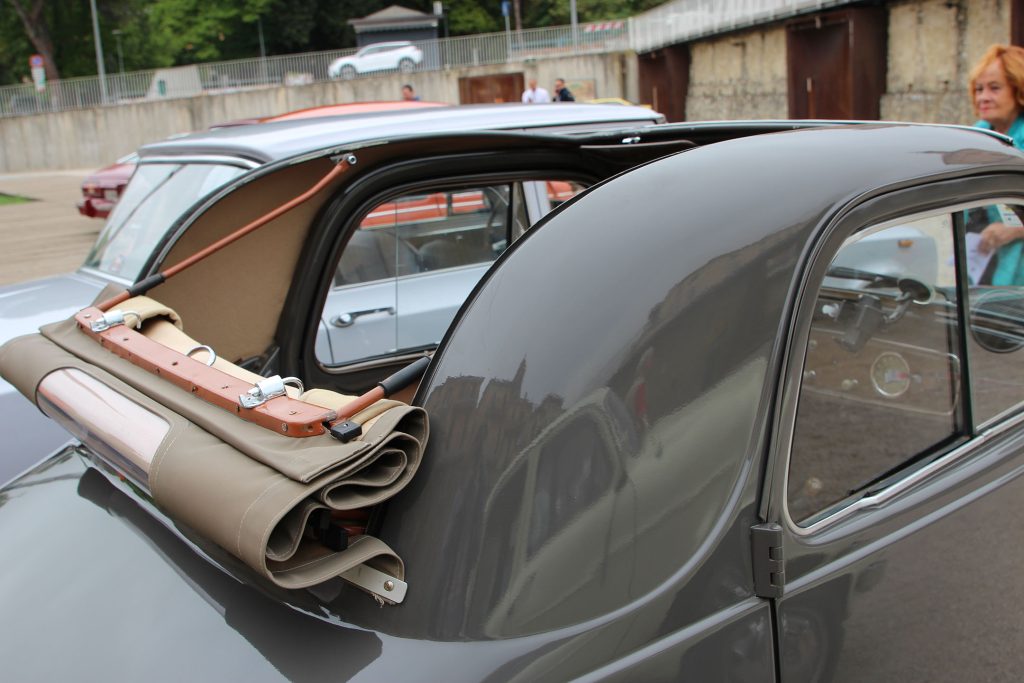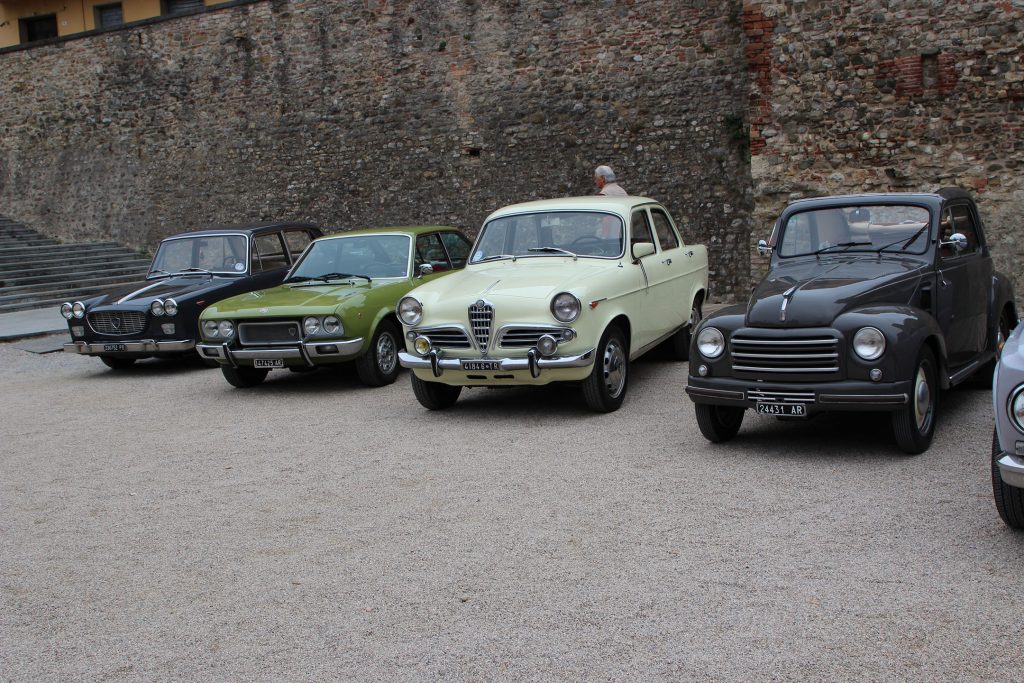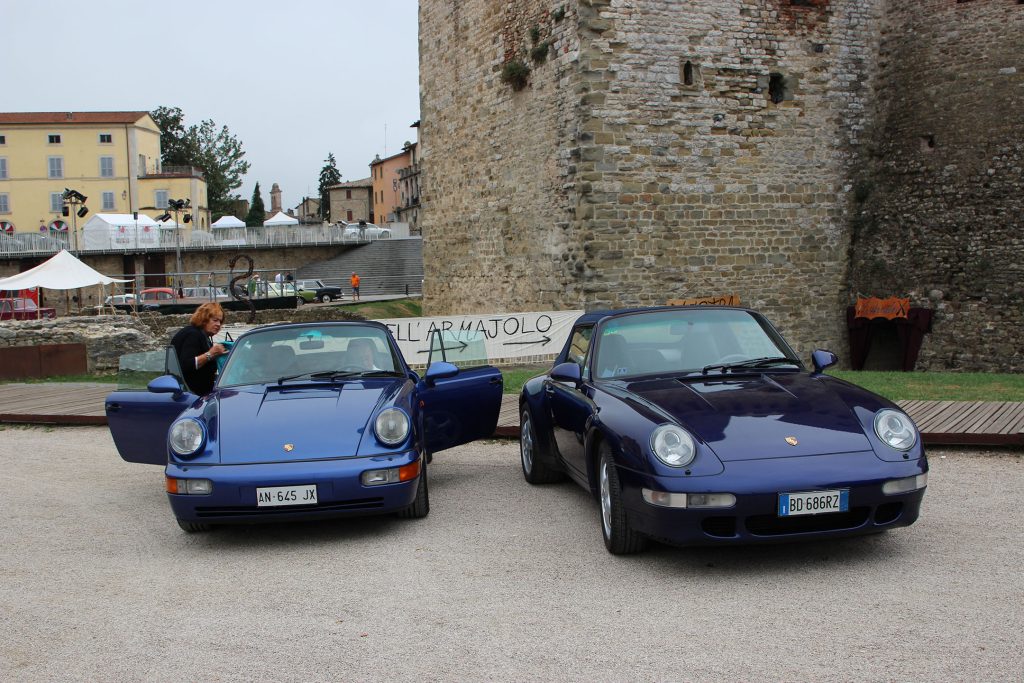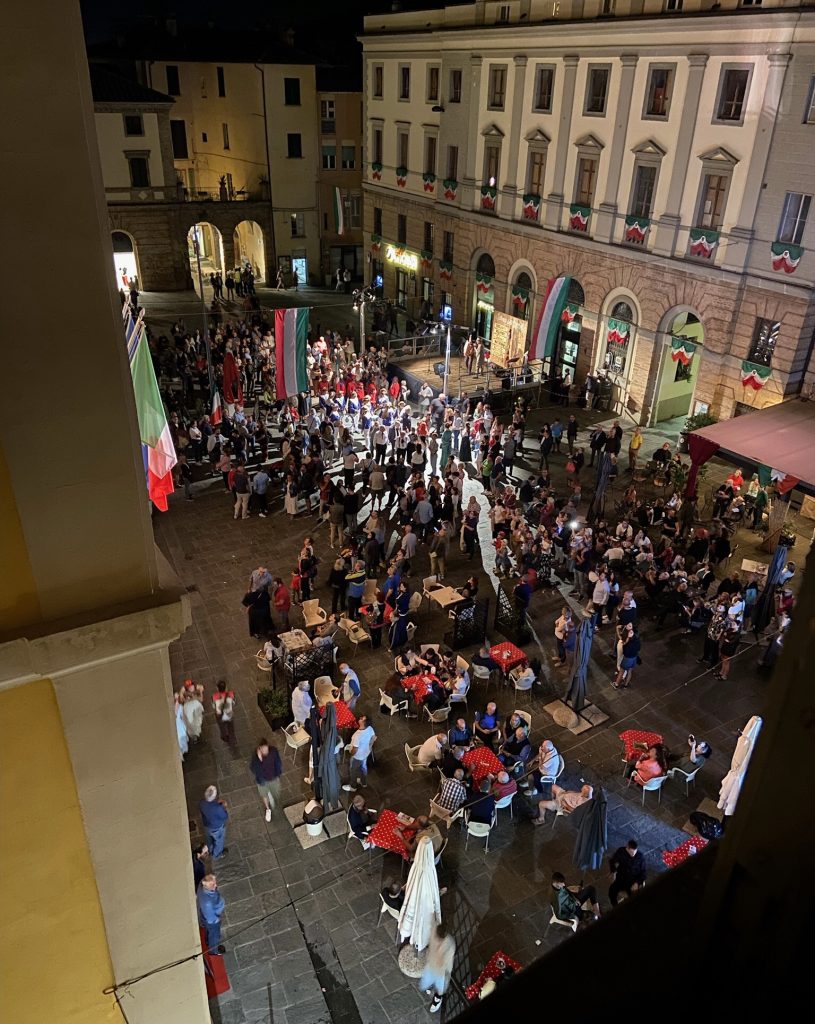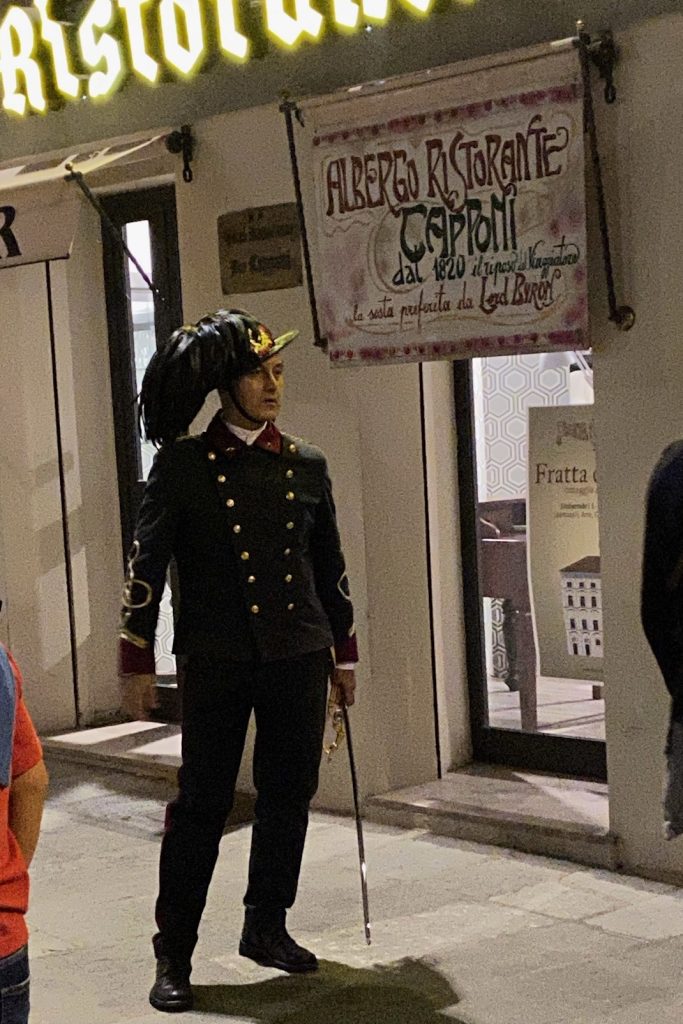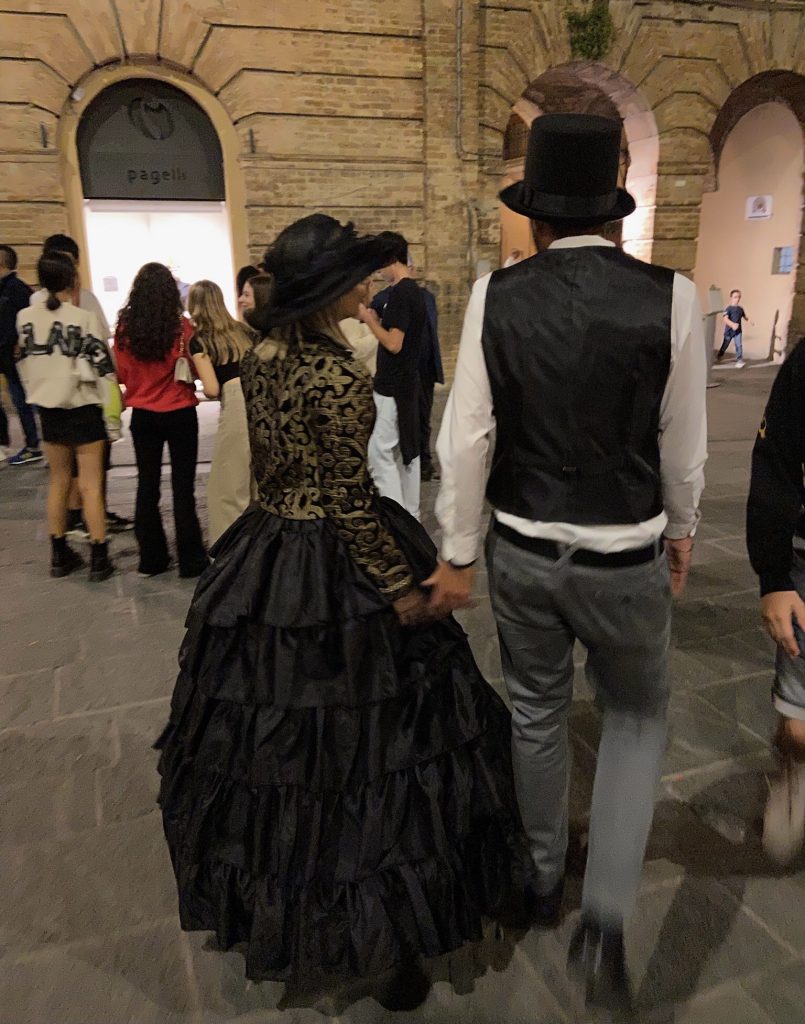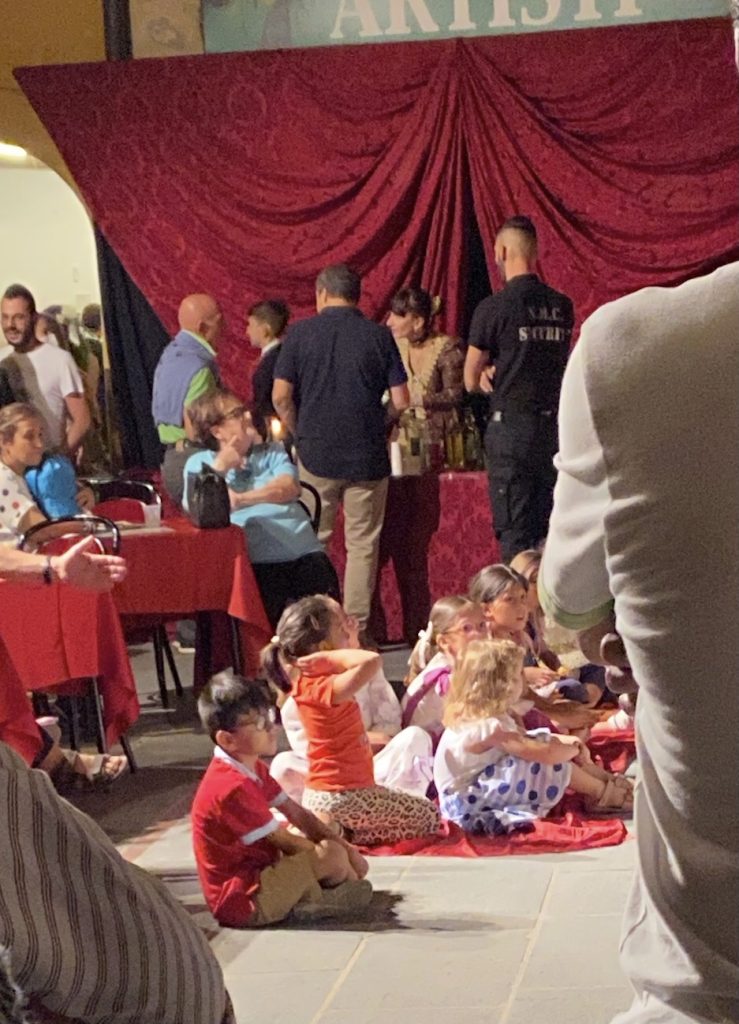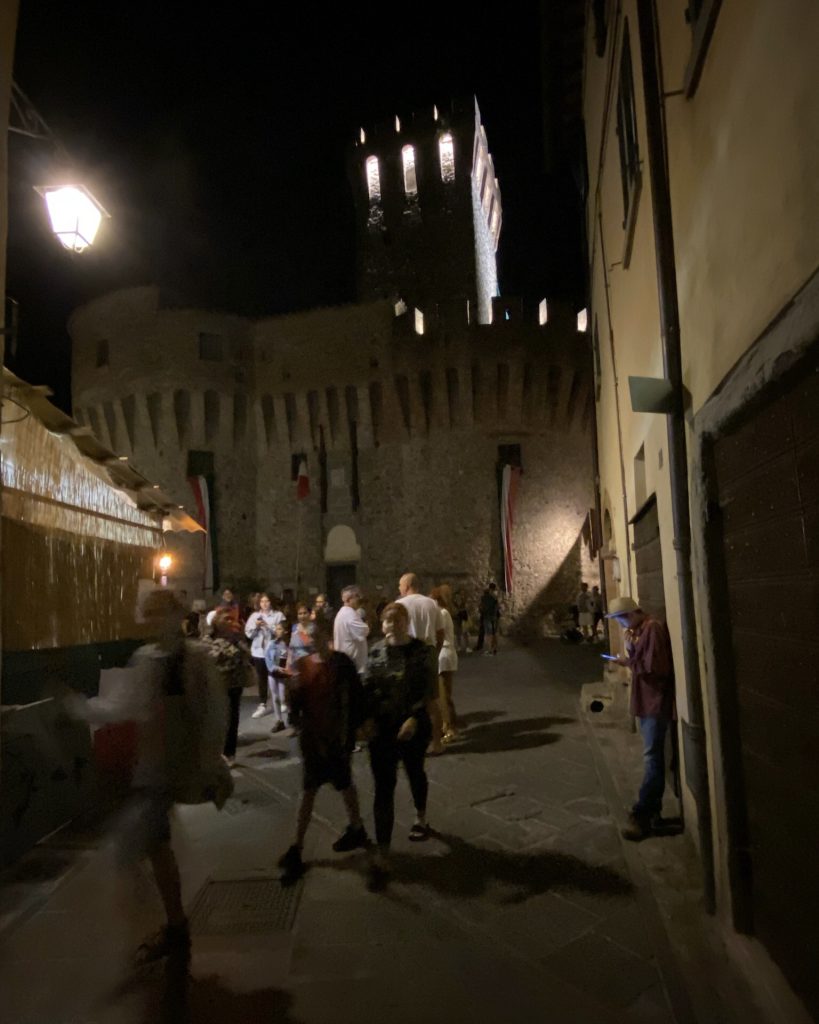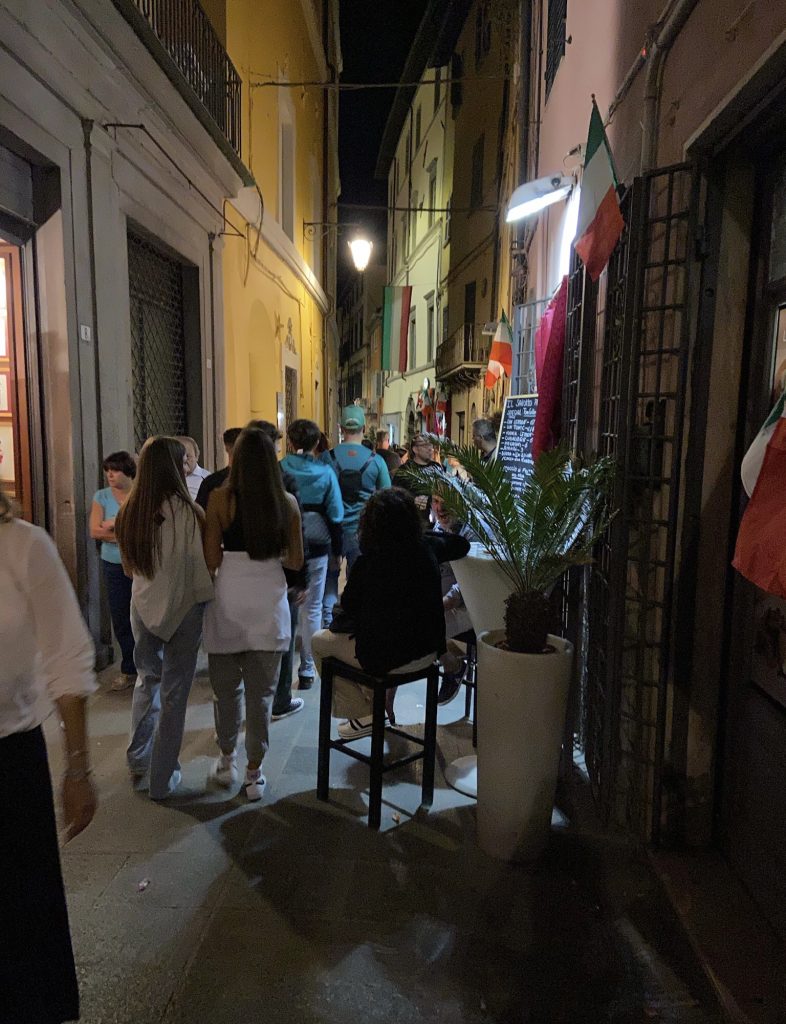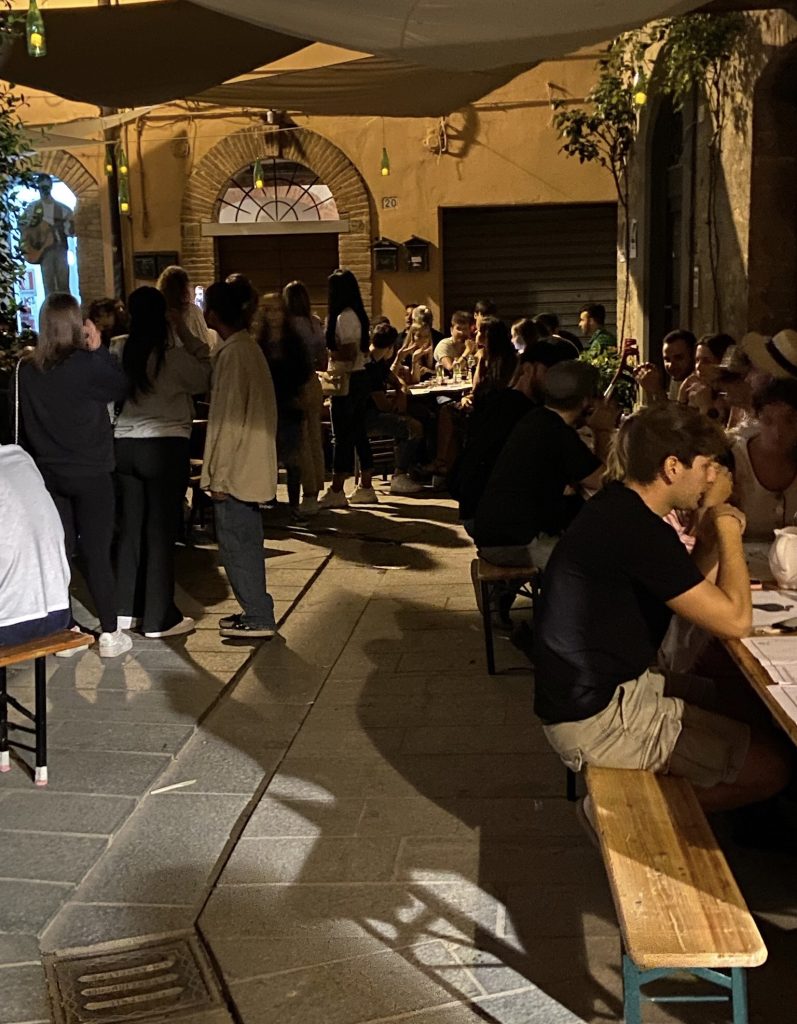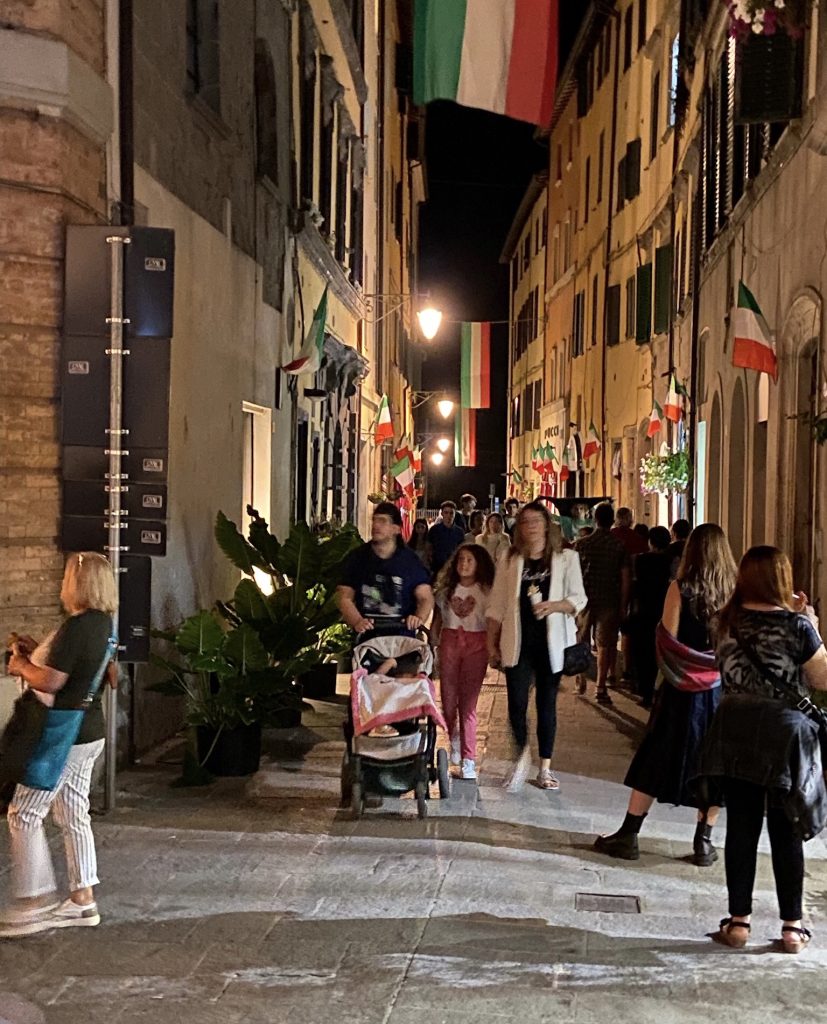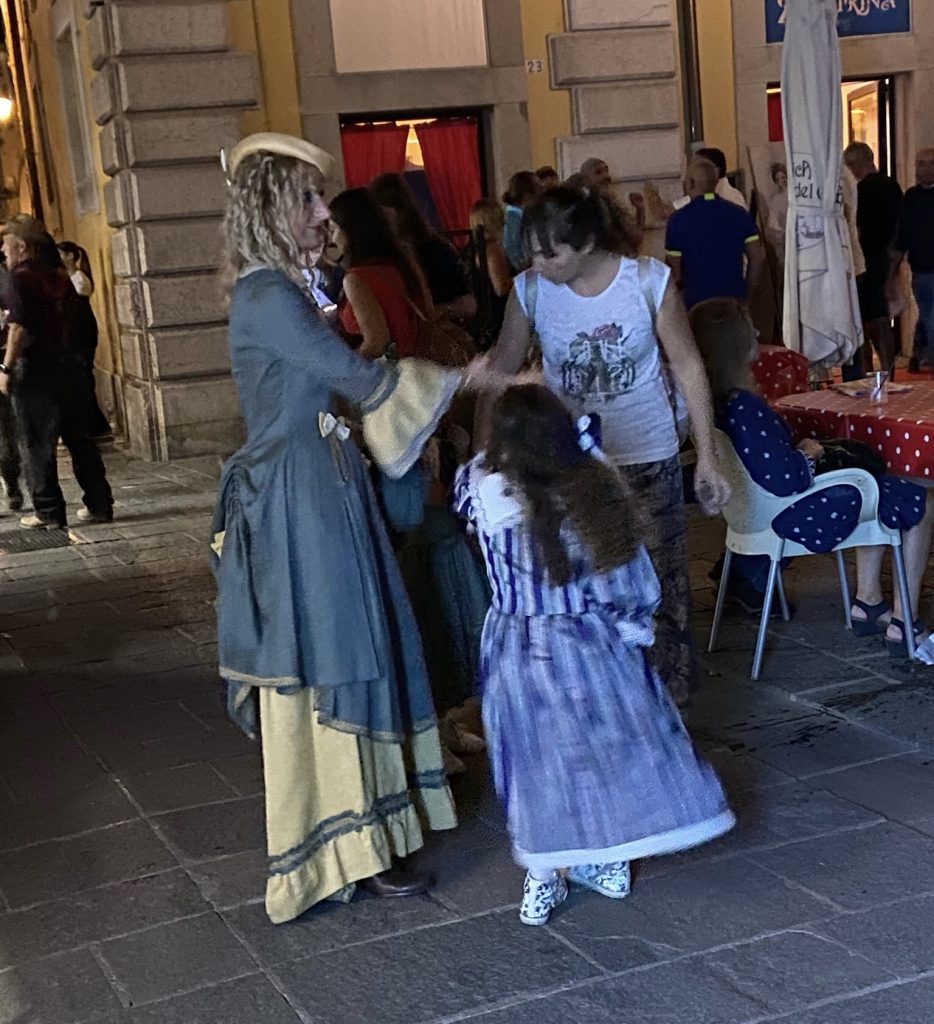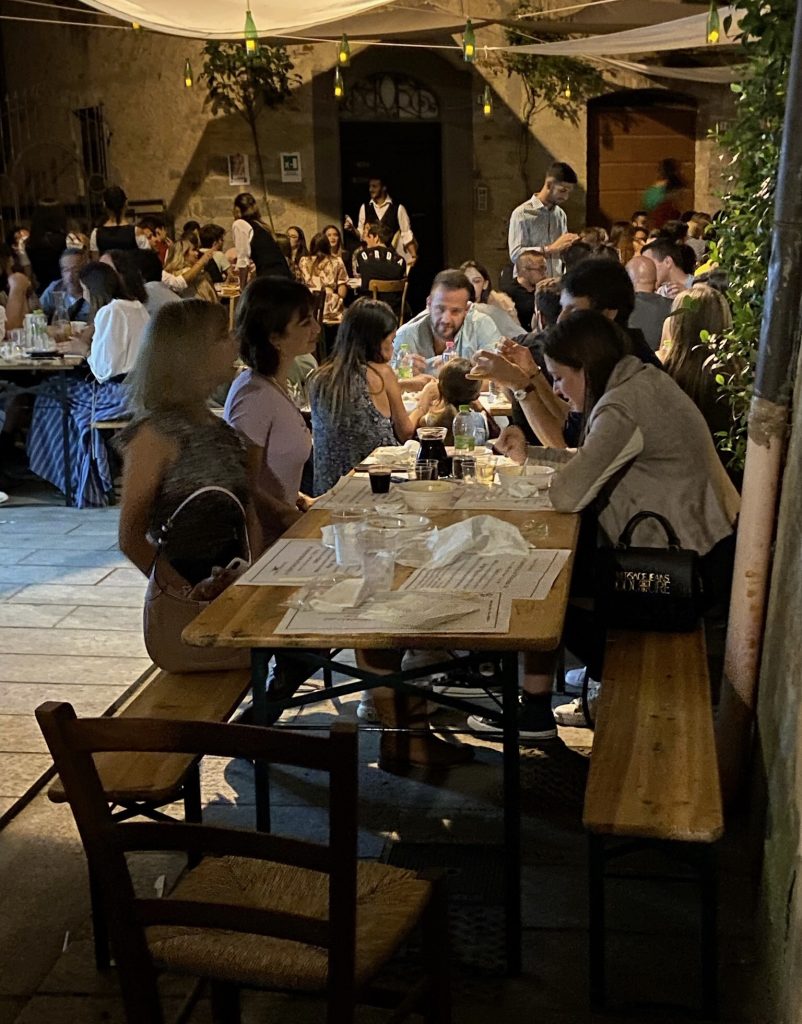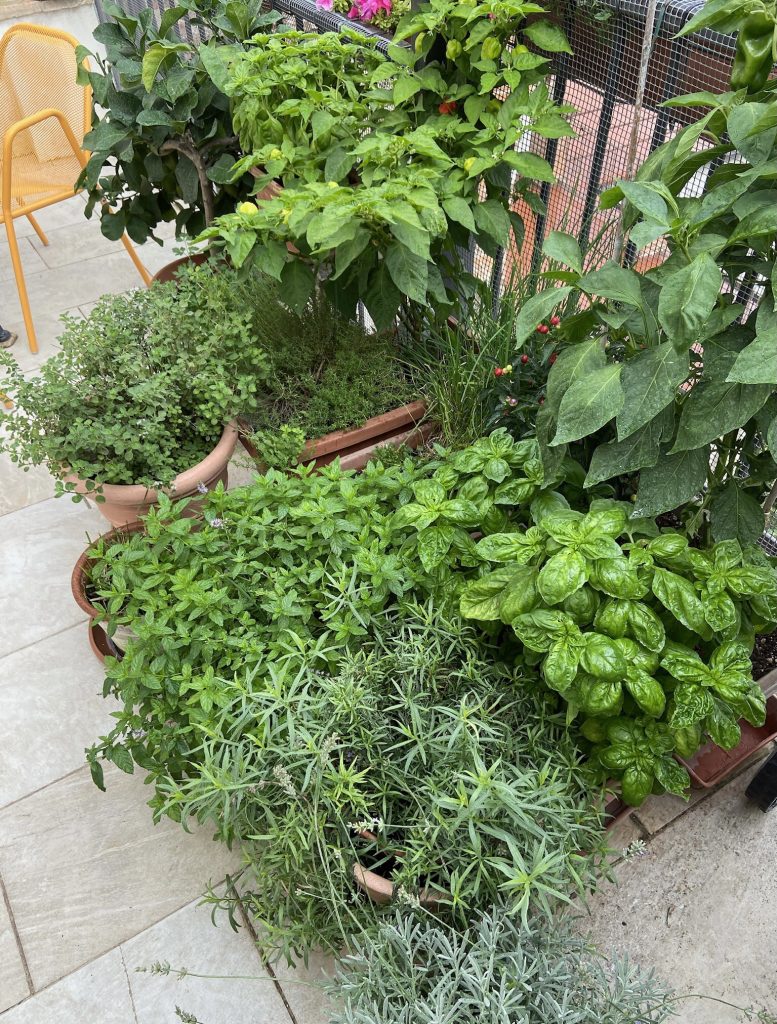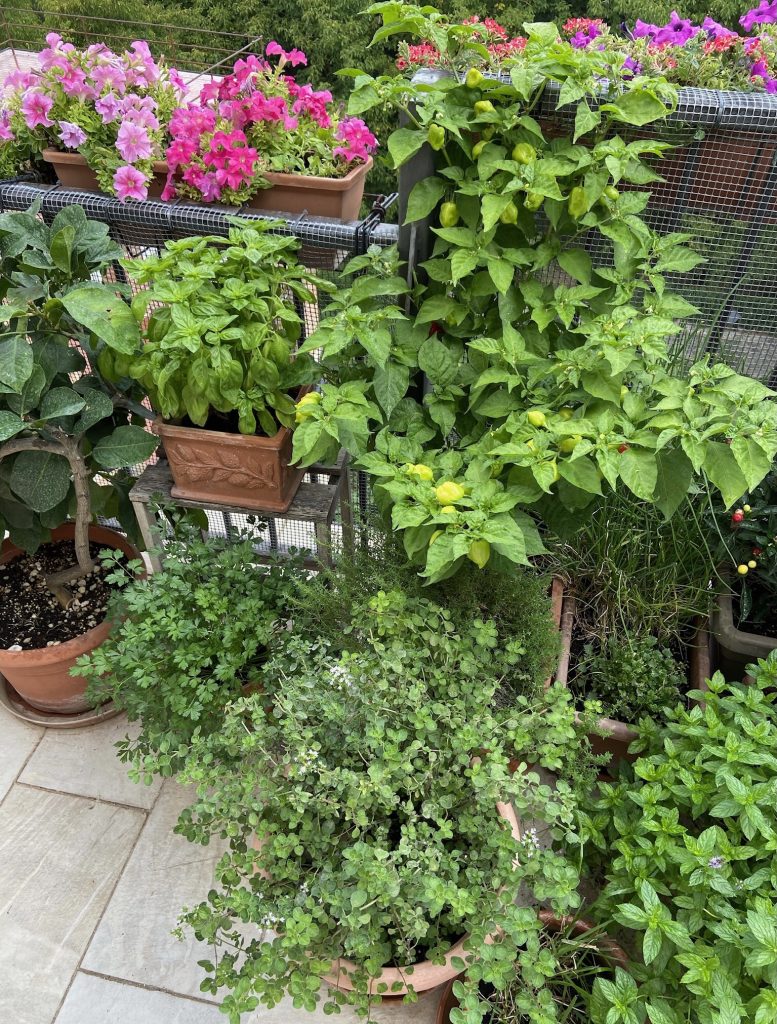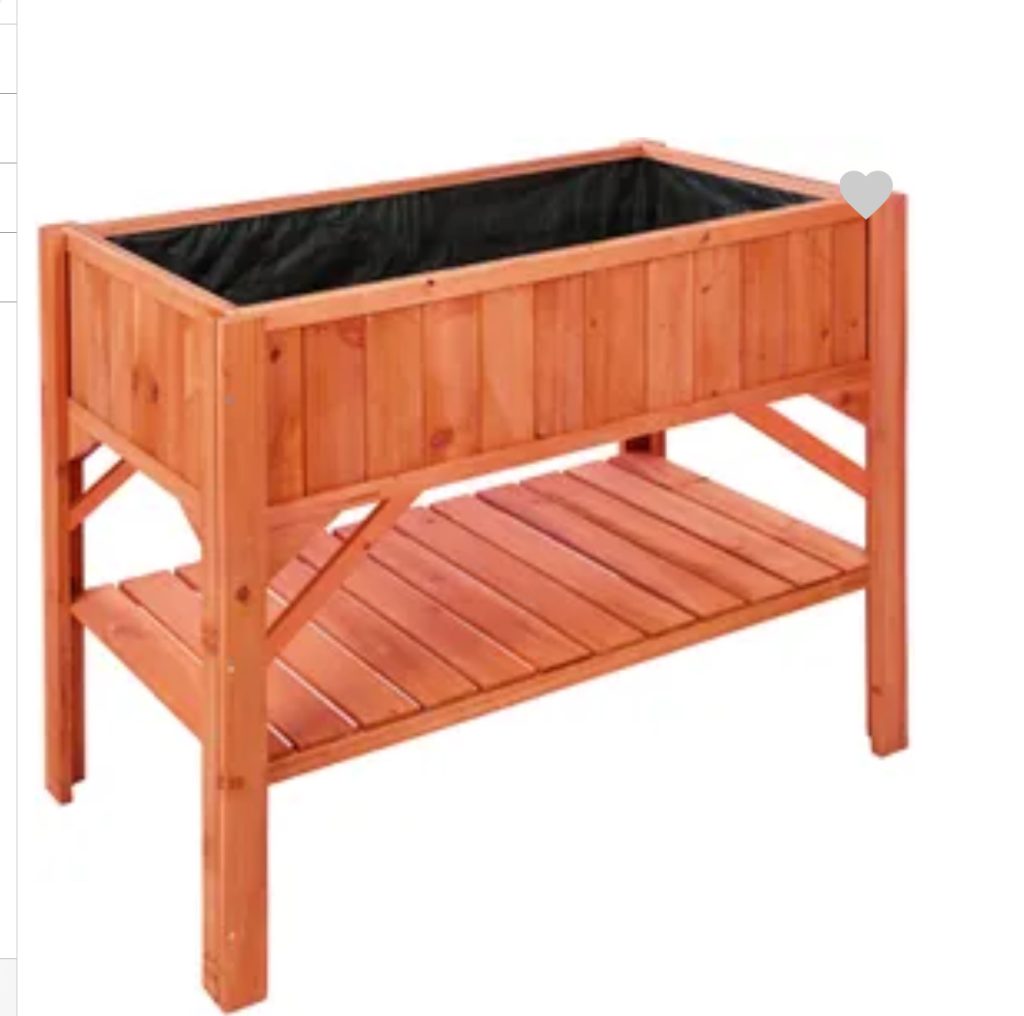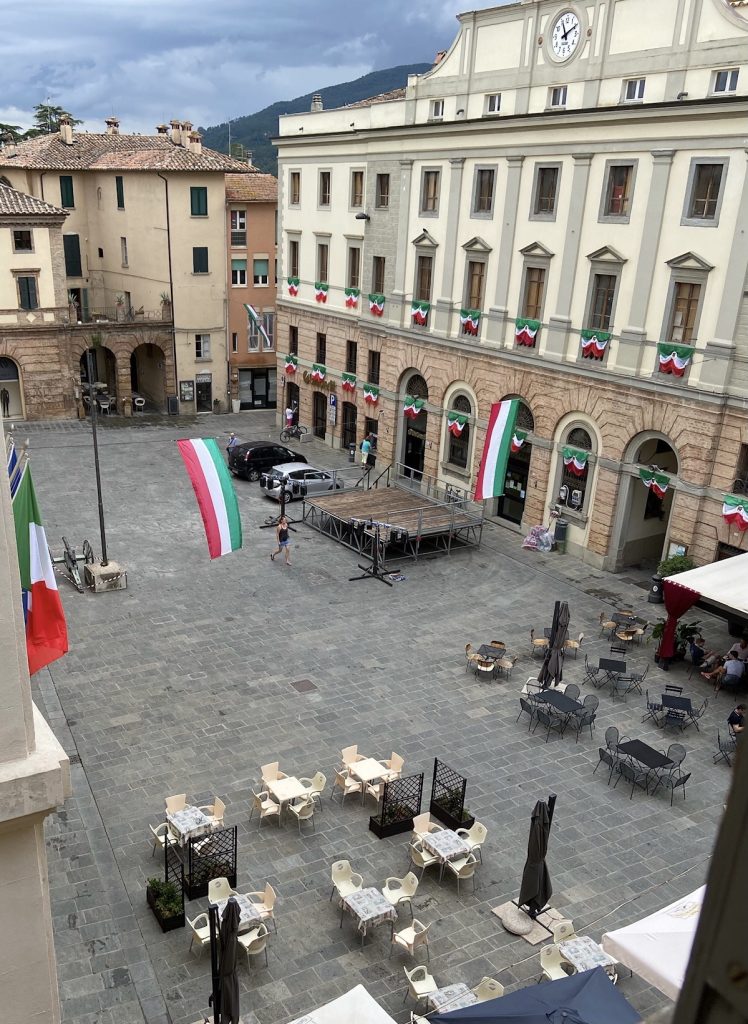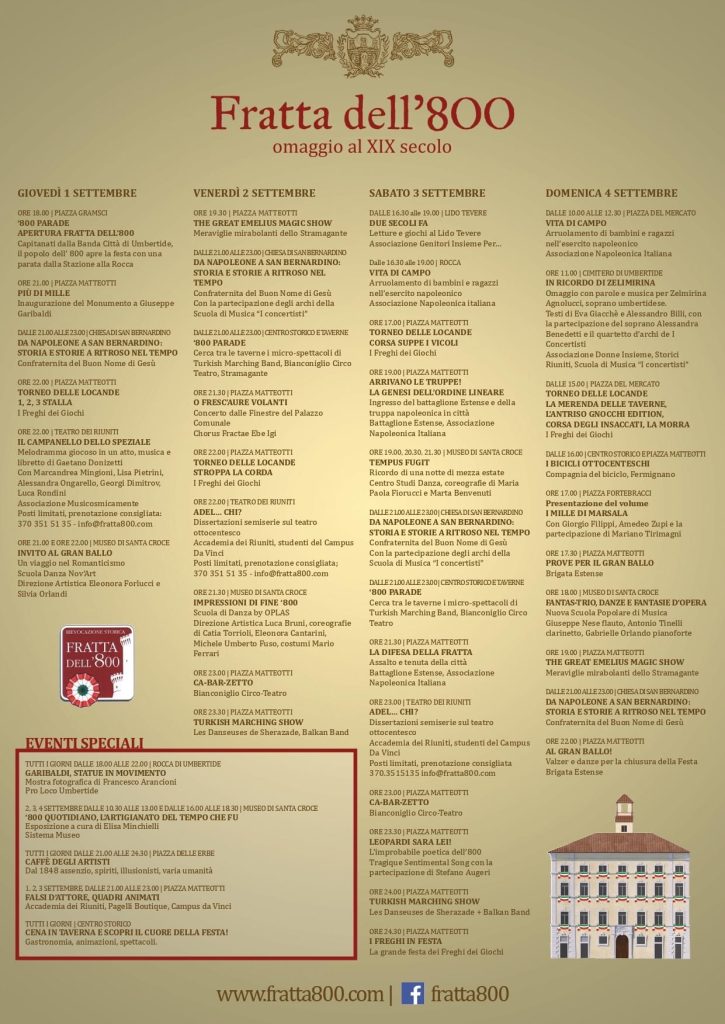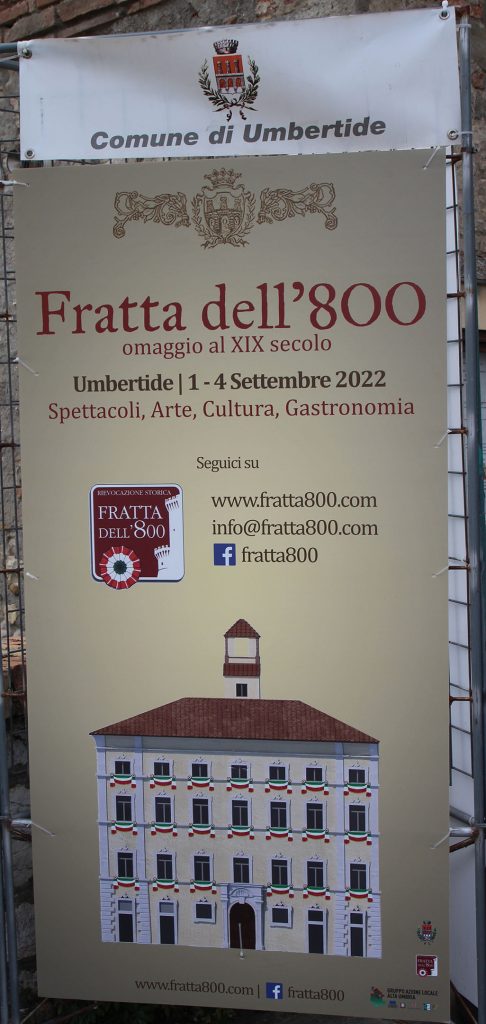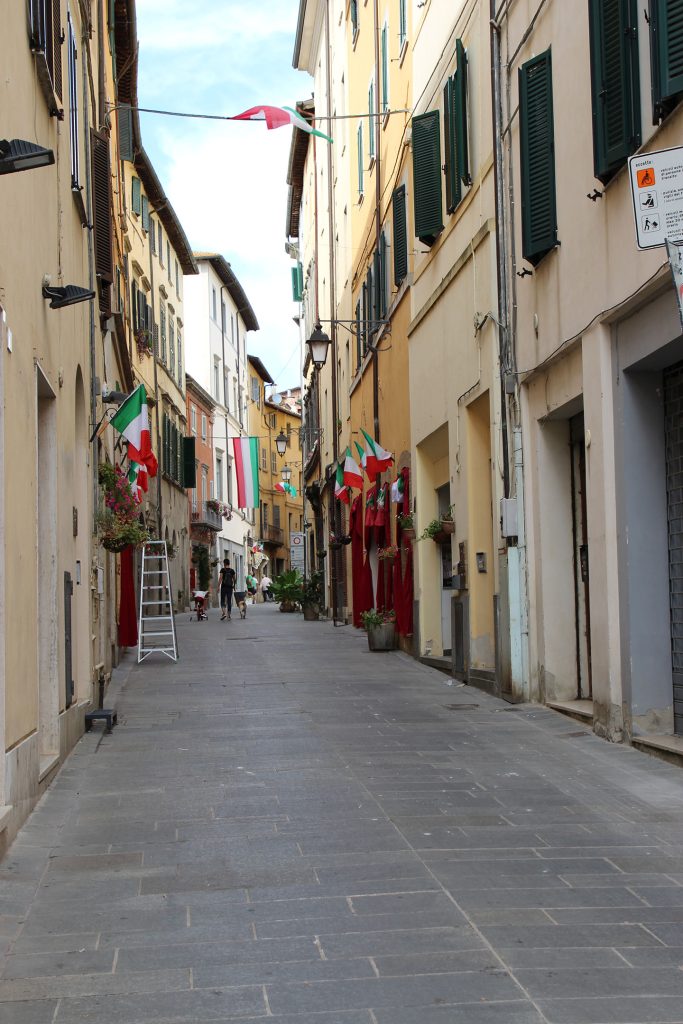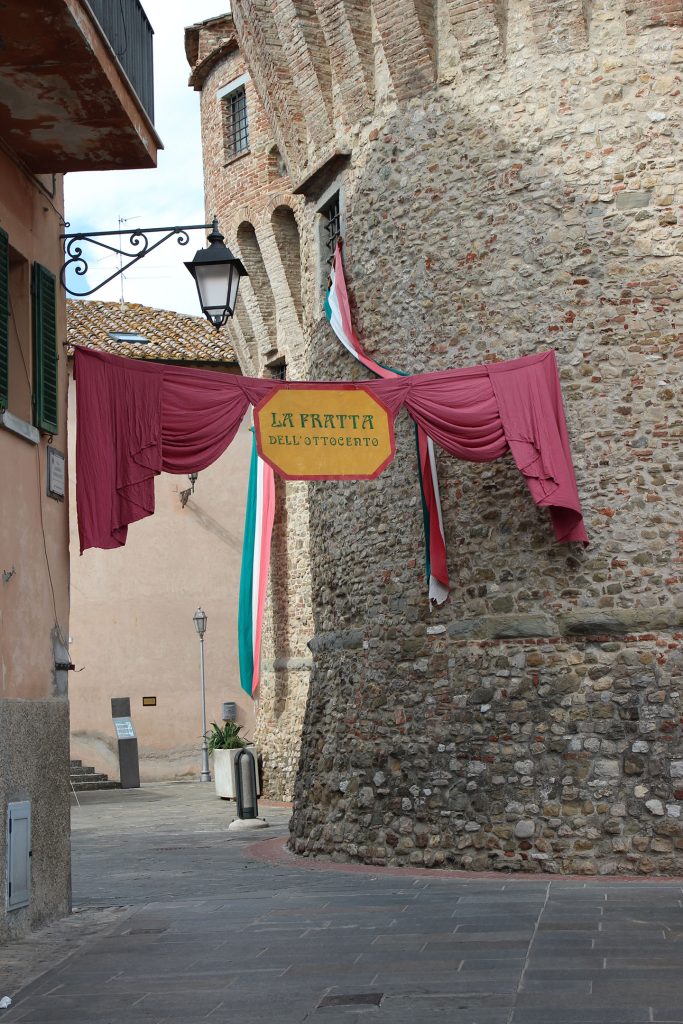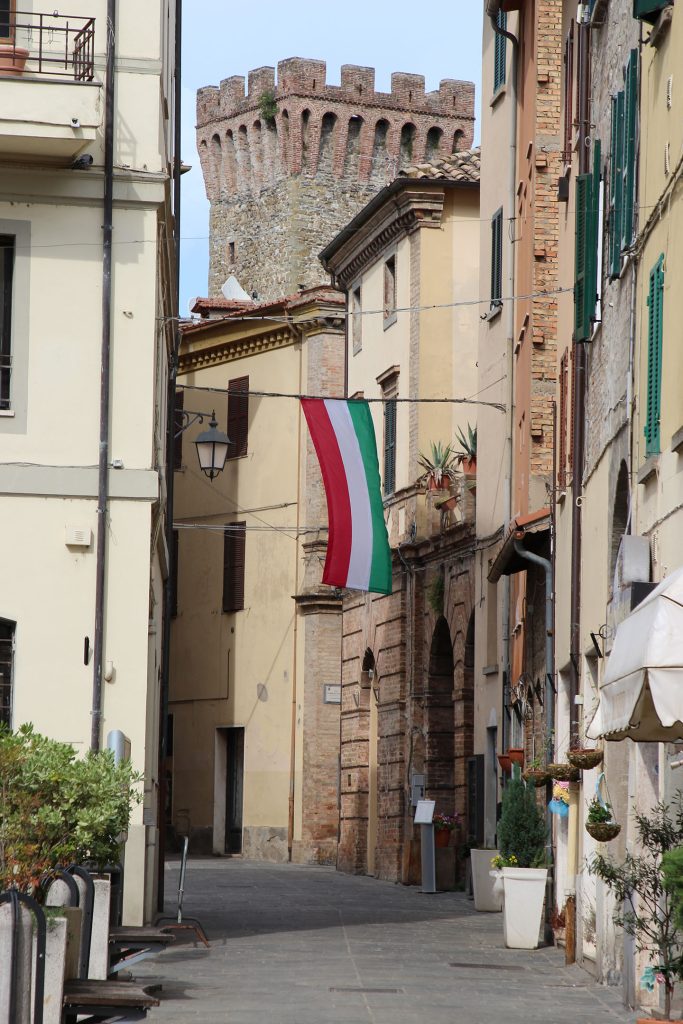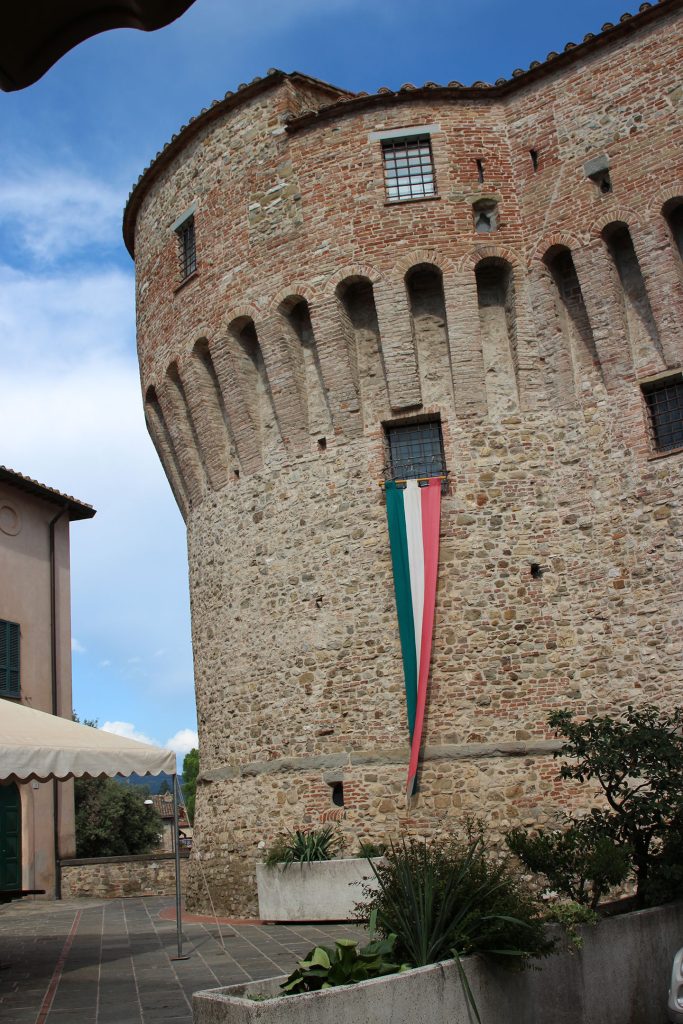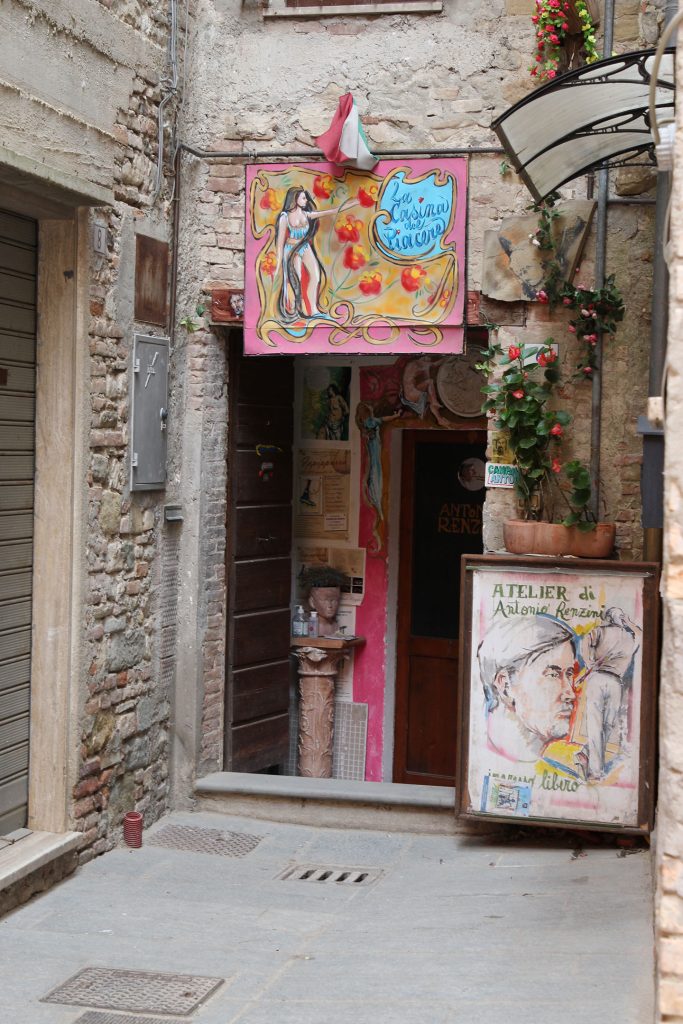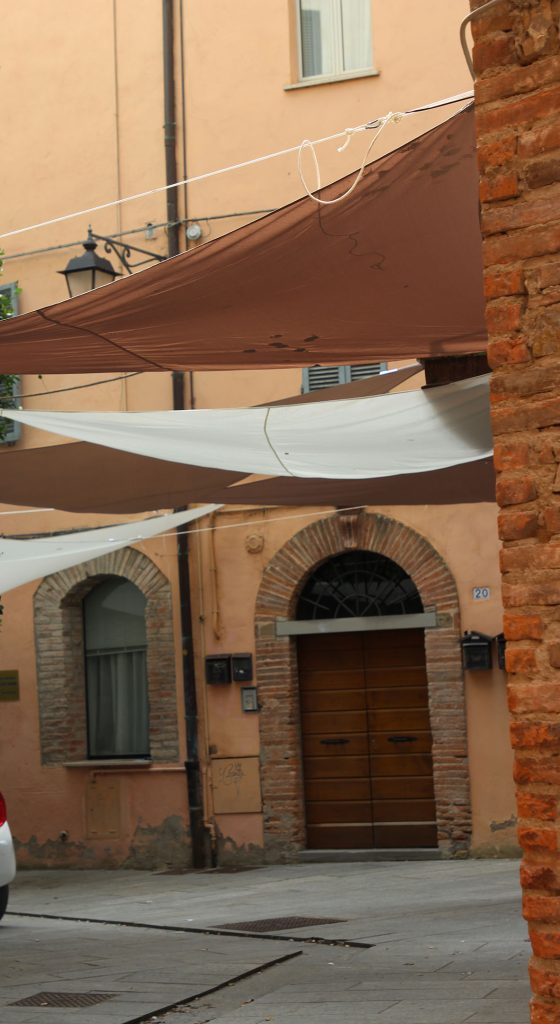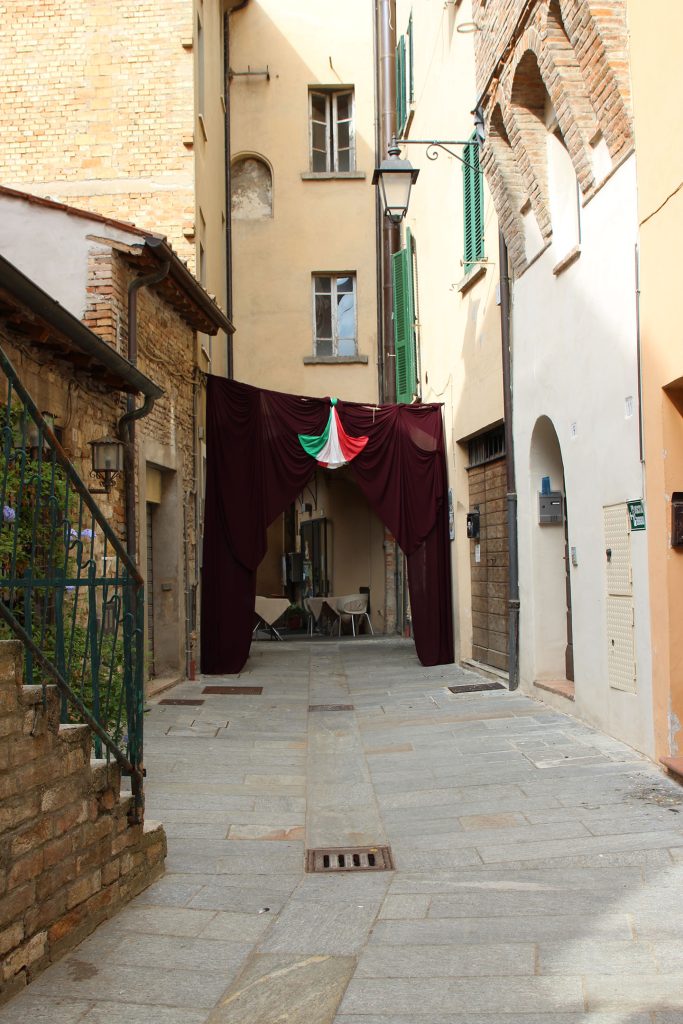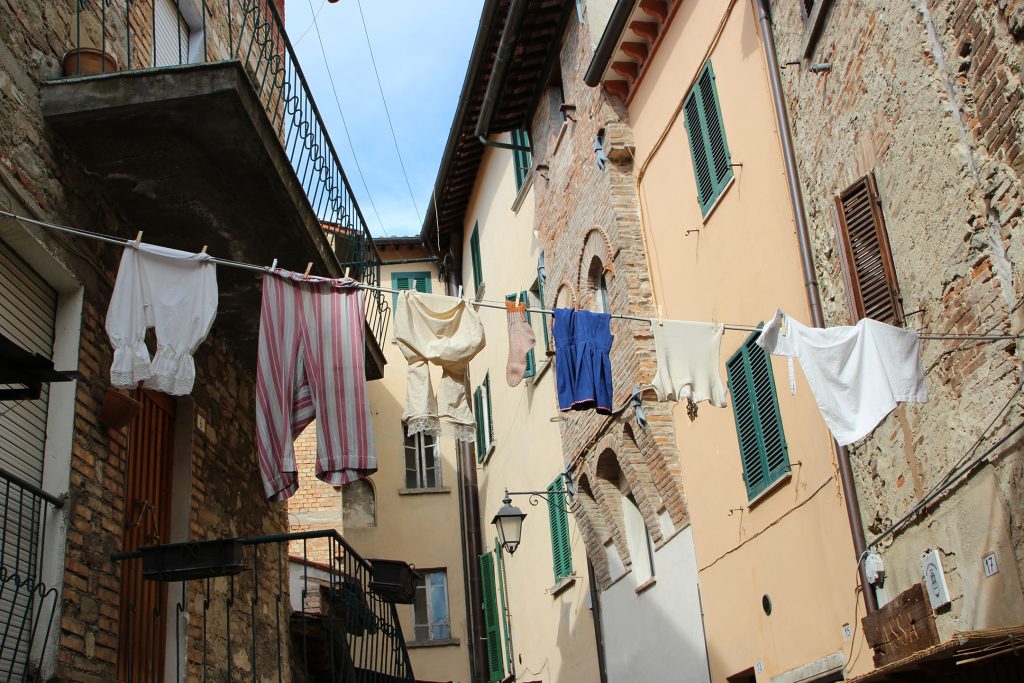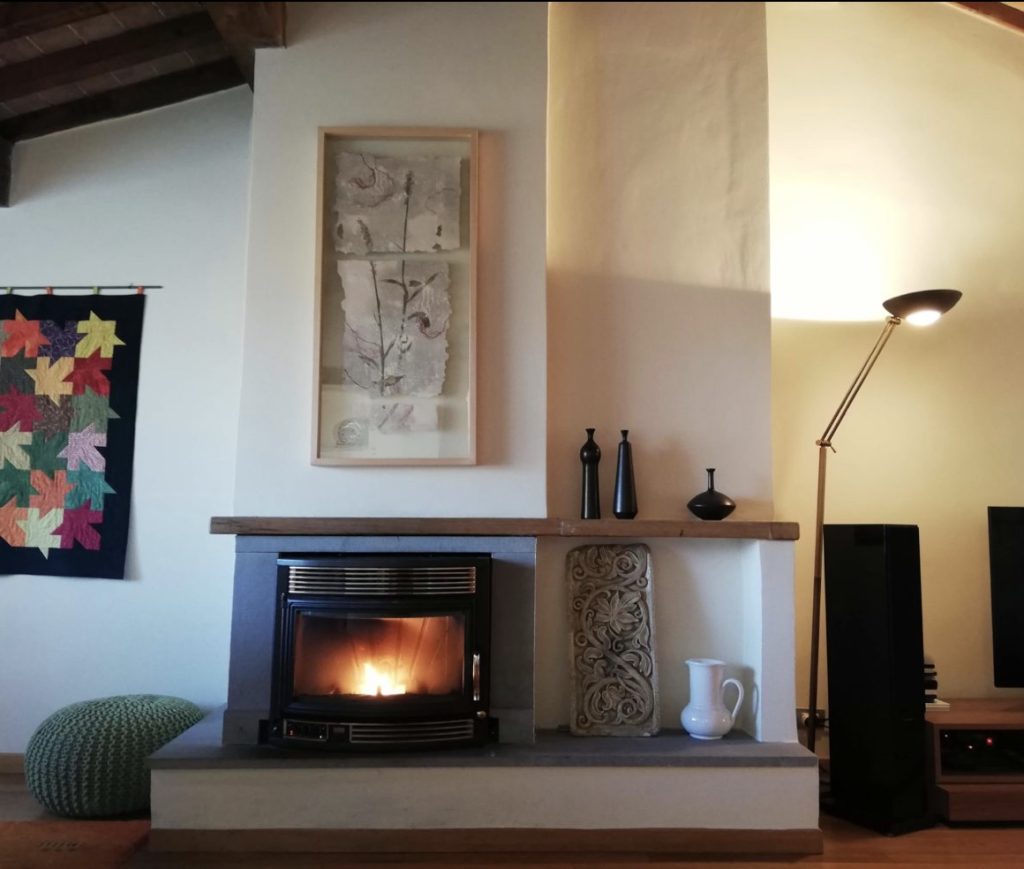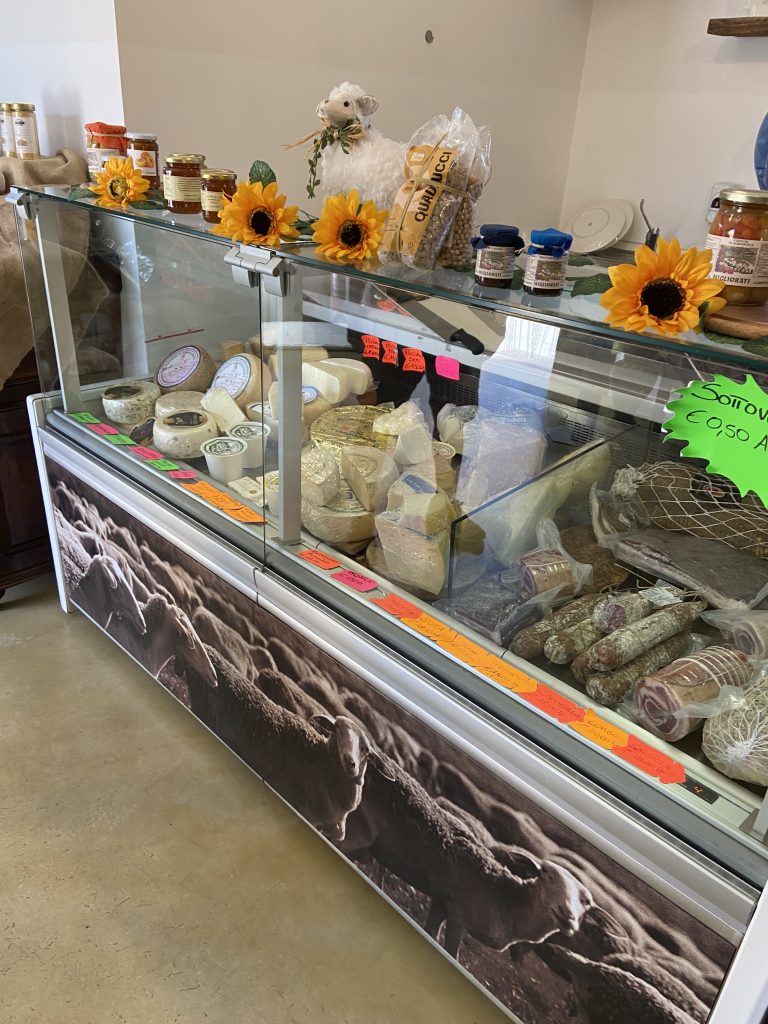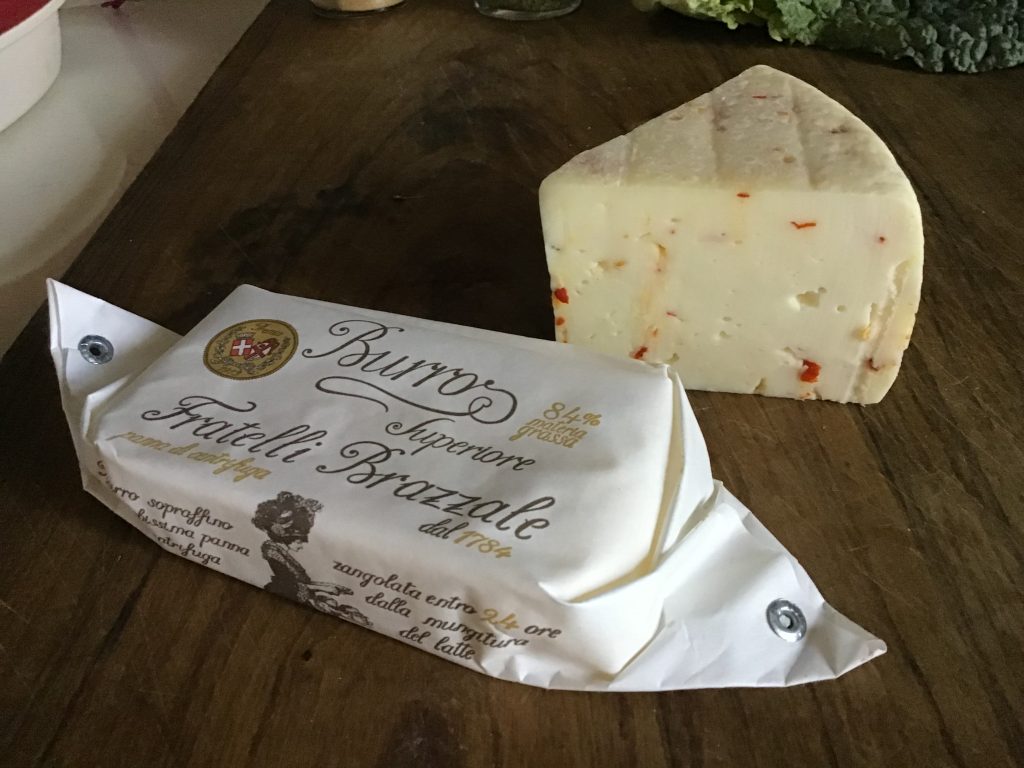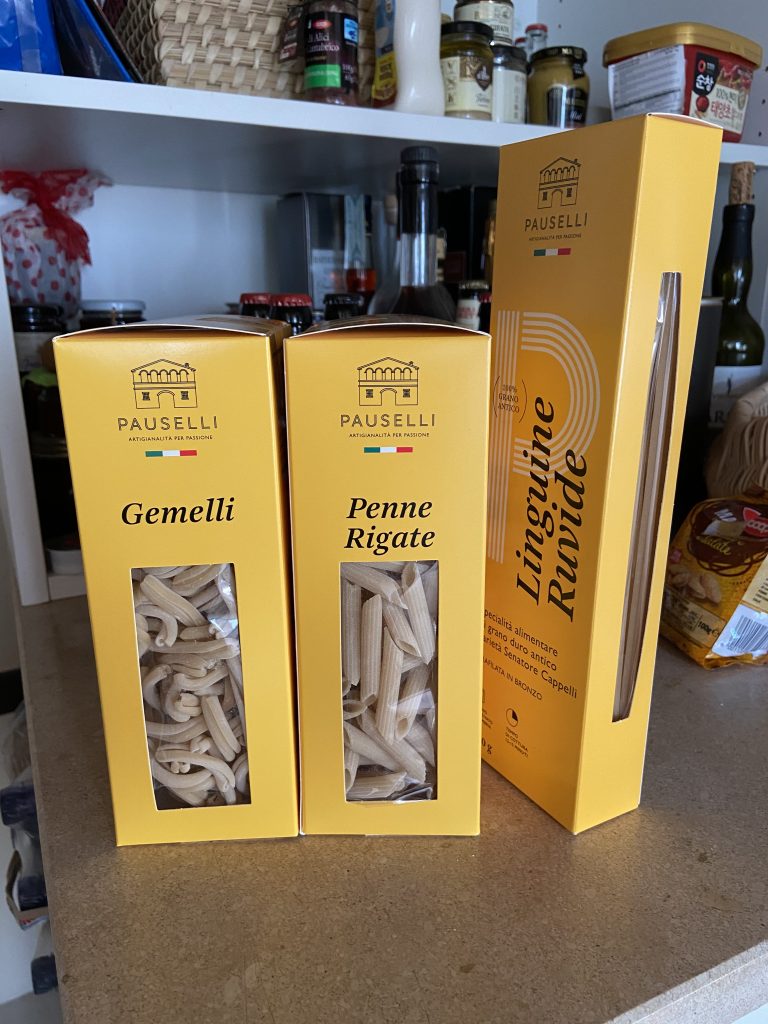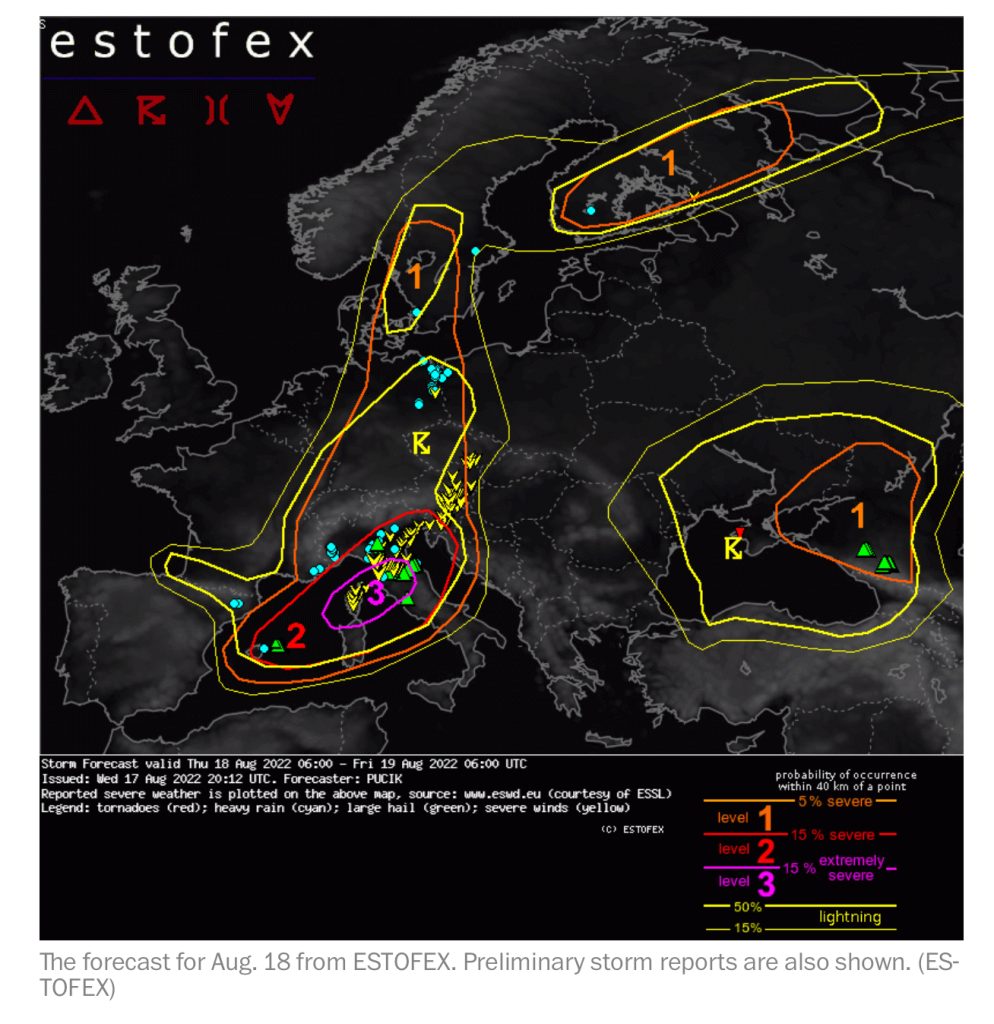Saturday September 10
We checked out of Maison Bergsorf and headed north. It had rained overnight and there were still clouds but small patches of blue too. We waited until ten o’clock to leave so the race could get started up the mountain. The ride was uneventful. Once we got past Thunsee, the other lake beside Interlaken, it got ugly fast. People don’t think of Switzerland as ugly. There is not much pretty once you leave the Alps. We did pass through Ementaler, the cheese making region, and it was pretty.
It took around three hours to get into France. We tried to find a place to eat lunch but had no luck. We stopped in a small town called Ensisheim. There was a cute place but it had a function that evening so was closed for lunch. They directed us to the Boeuf Rouge. Another cute place but it looked like a beer hall inside. So many people. And they were full. So we tried our luck in Colmar. Hah! The place was awash in tourists. Things have changed since we were here. Way more tourists.
We gave up on lunch and drove on to Obernai, our destination. Way back in the 1990s, we lived near Frankfurt Germany. It is only 2.5 hours from this part of France. We spent many weekends here. And we love A La Cour d’Alsace, our hotel. It’s a small place and I had trouble getting three free days so this vacation kind of revolves around this location. Anyway, we drove in and parked in their nice parking lot and checked in. As we walked to our room I told the lady we used to come there long ago. Turns out she had been working here for 29 years, so she was here back when we visited. She seemed pleased that we had returned.

We relaxed a bit and ate the only food we had with us, olives. 🙂 Then we took a stroll in town. It is a really sweet town with a lot more in it that it used to have. Happily, it also seems not to be aimed exclusively at tourists. The shops were useful to the locals as well. There were a lot of restaurants along a new-to-us pedestrian street. I snapped some pictures. These are all in Obernai.
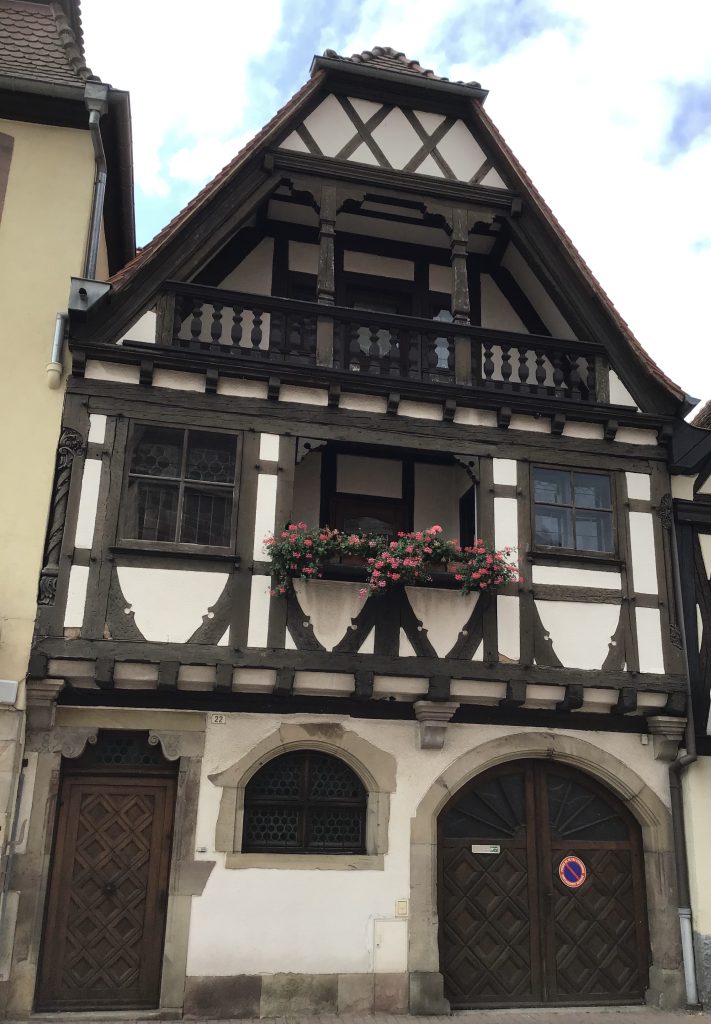
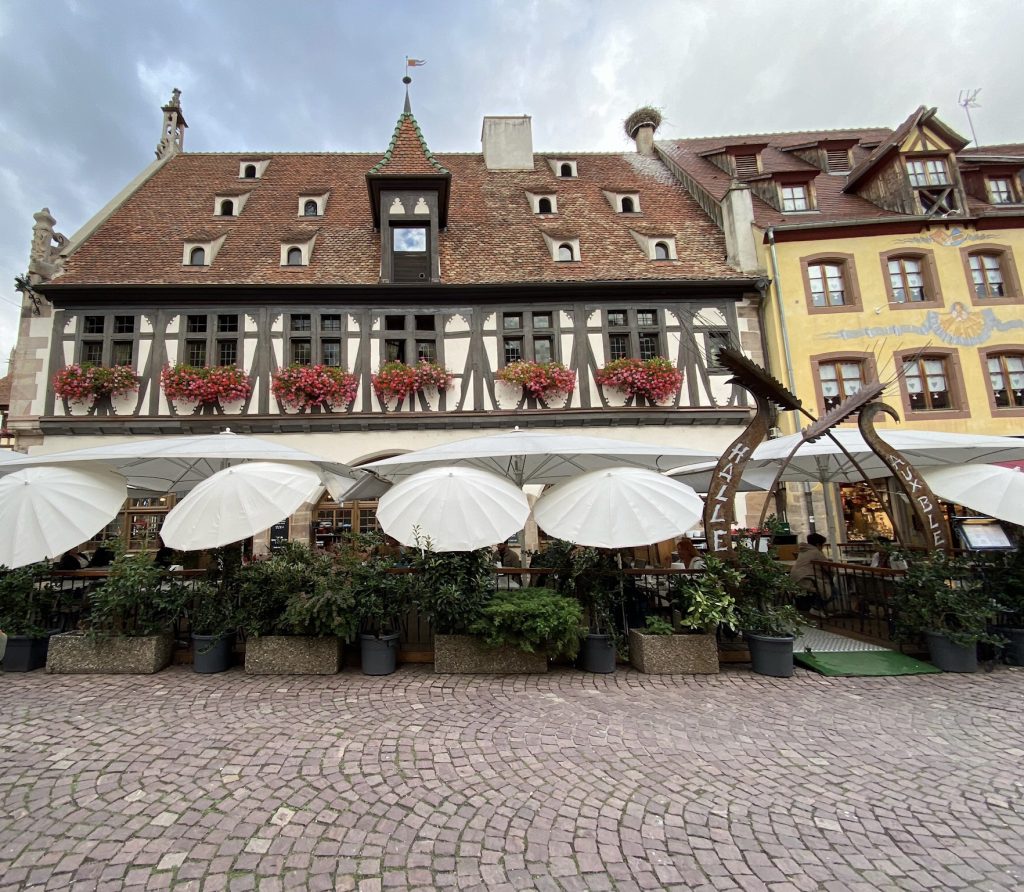
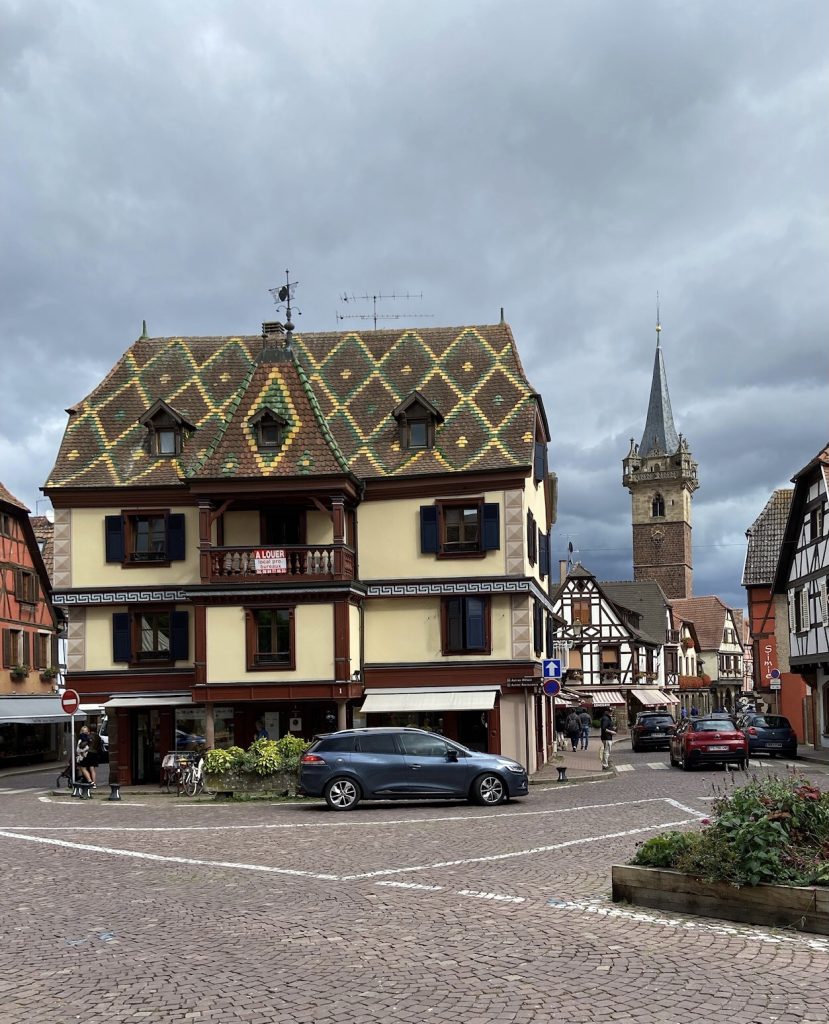
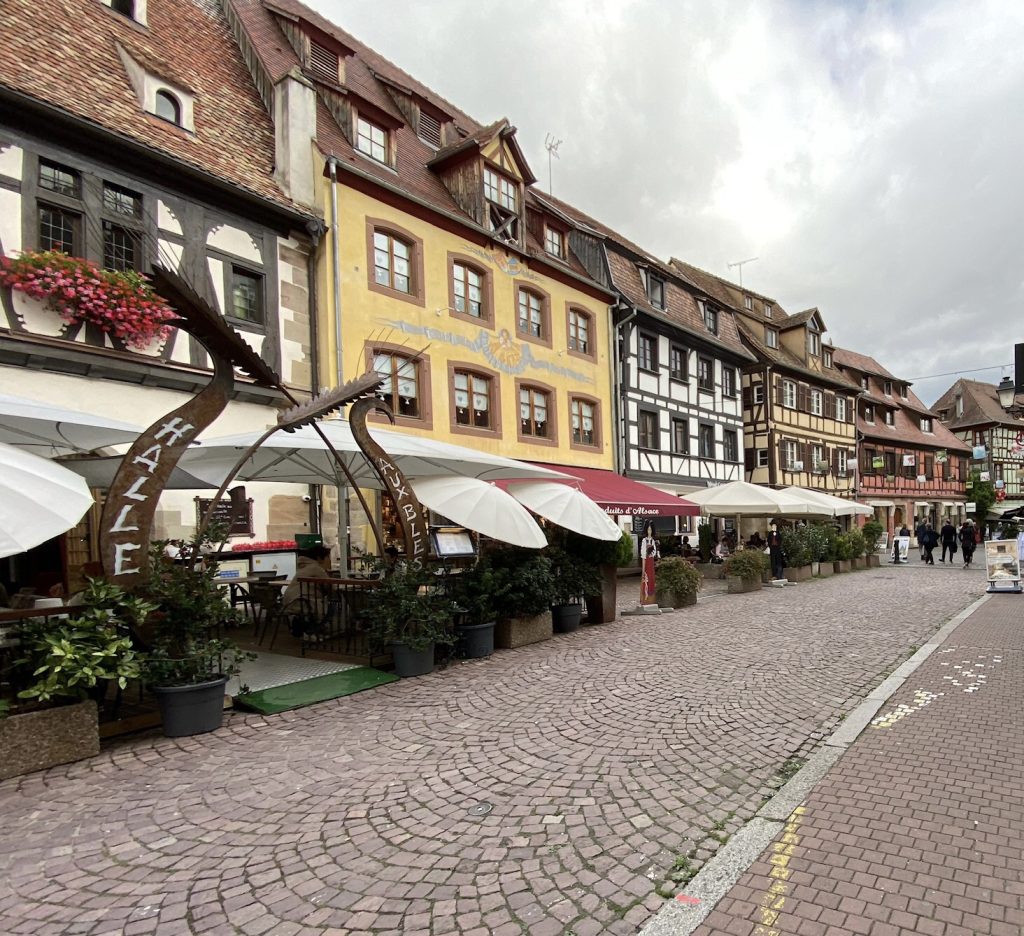
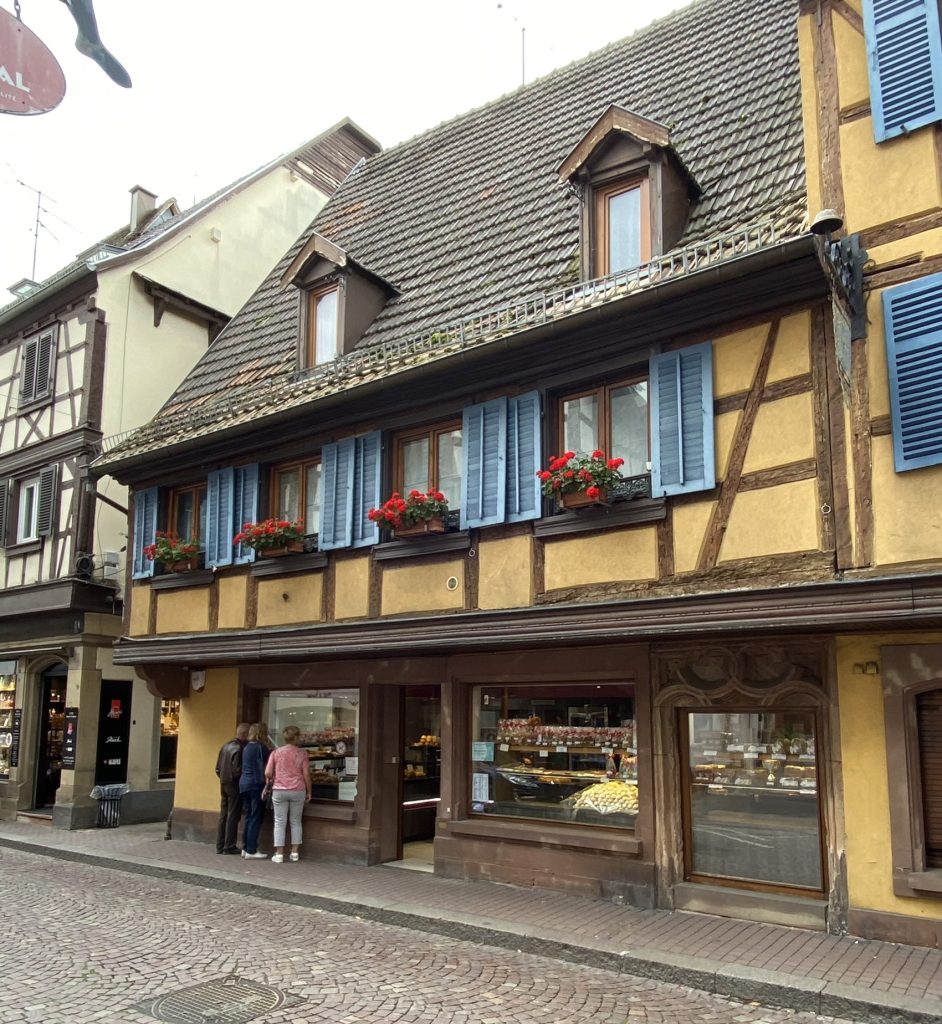
Back in the hotel I watched some of the tributes to Queen Elizabeth. William and Kate and Harry and Megan were greeting the crowds. She was well loved. And I watched a little of King Charles’ speech. He is no Queen Elizabeth! I wonder how he will do.
Later we had dinner in the winstube restaurant. The hotel has this one and a gourmet one. I like the more casual one. We had a good enough dinner. I wouldn’t give it high marks. I had snails and a chicken breast with spaetzle and vegetables.
Sunday September 11
When I looked at the date I was reminded of the day and what happened this day 21 years ago. I won’t ever forget.
We planned to have breakfast in the hotel but the dining room was full. So we walked down the street and found a little place that served petit déjeuner. We had a half baguette with butter and jam and a café au lait. The latter was awful. No discernible coffee in it.
We drove off, top down, to explore La route des vins d’Alsace. It is the oldest wine route in France and has always been a favorite of ours. It winds through the small villages which are all rated Villes et Villages Fleuris. They give one to four flowers on a sign when entering the town according to how many flowers they have. The Alsace has a lot of flowers. They also grow more grapes than just about anyplace that we have ever been. Even Italy. Miles and miles, acres and acres of vines as far as the eye can see. Amid all this are the little villages all all painted vibrant colors leaning to peaches, terra cottas, yellows, but sprinkled with blues, reds and purples. The roofs are all terra cotta tiles.
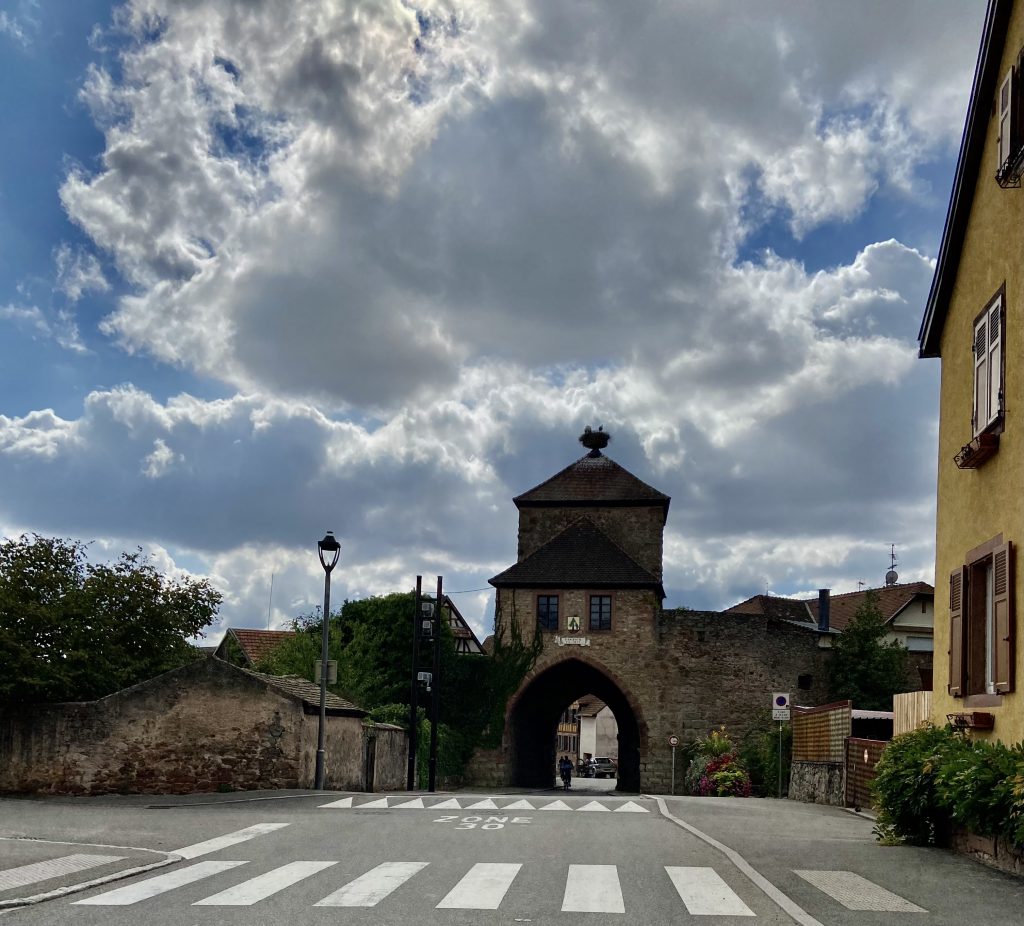
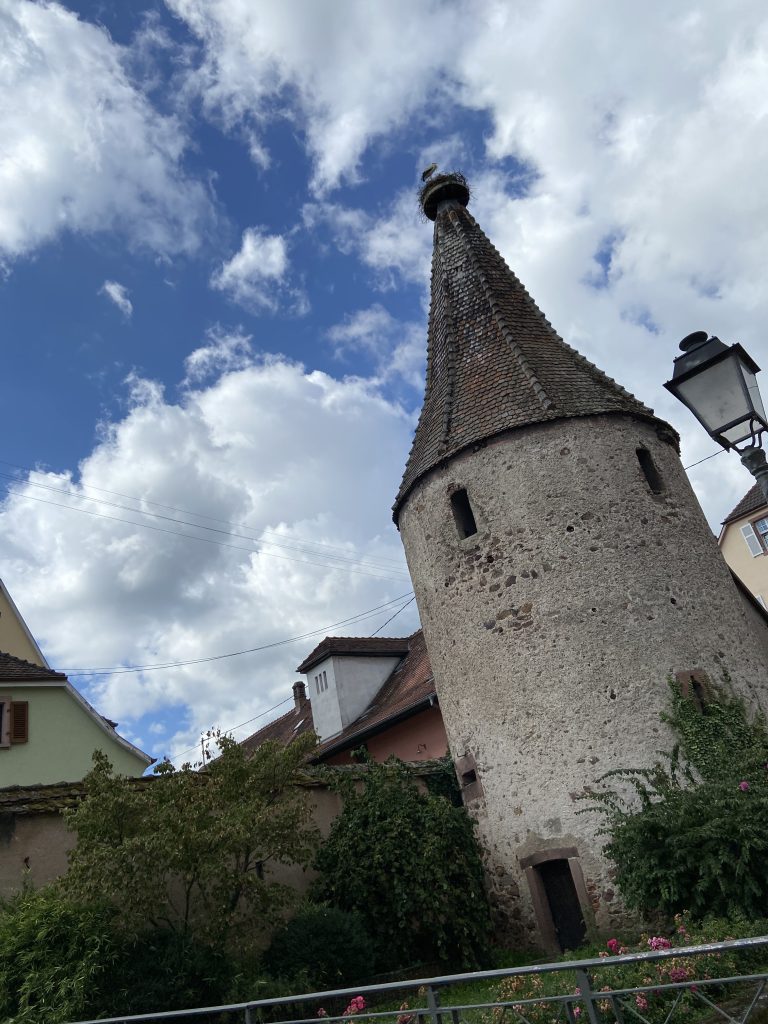
We drove as far south as Riquewihr. It’s a pretty walled village set in the vineyards. I was on a mission. Long ago, when we regularly visited the Alsace, I bought wine glasses of a certain type called Roemer. They have green stems that are thick and ridged. At home we are down to our last two glasses. Sad. So I aimed to buy some more. There was a store in Riquewihr that always had them. But no more. It seems these glasses are now “vintage” and no longer made. A major disappointment. I will keep an eye out while in Germany because they have these glasses too but their stems are not as bright green. I would still buy them. They are kind of part of our lives!
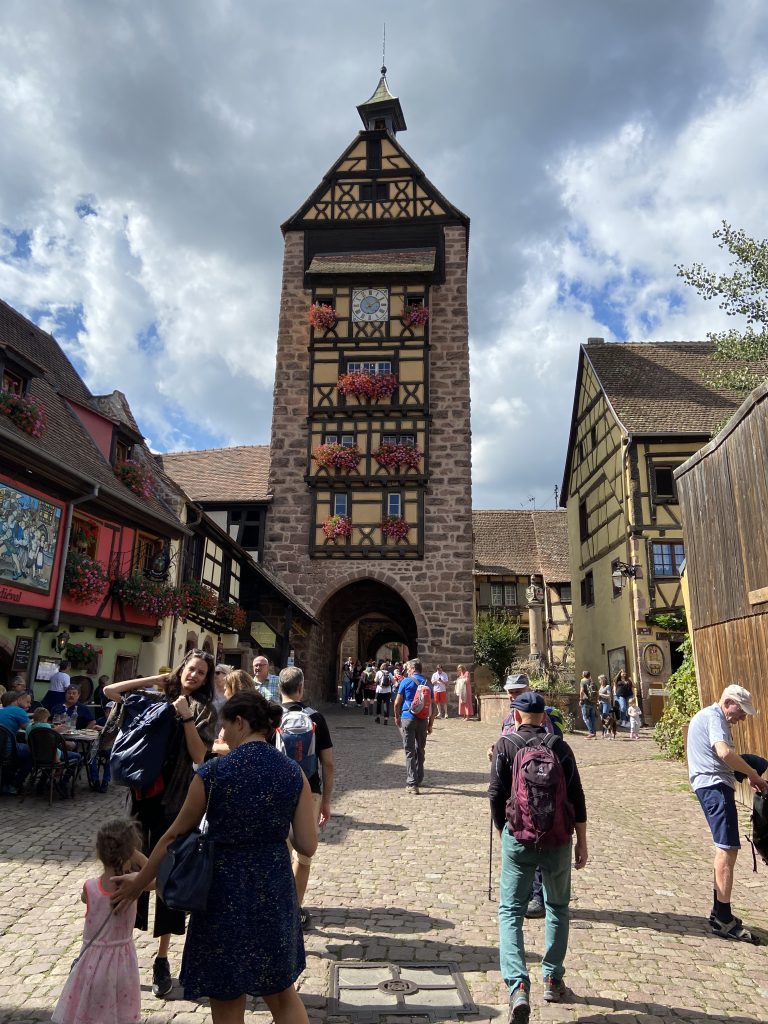

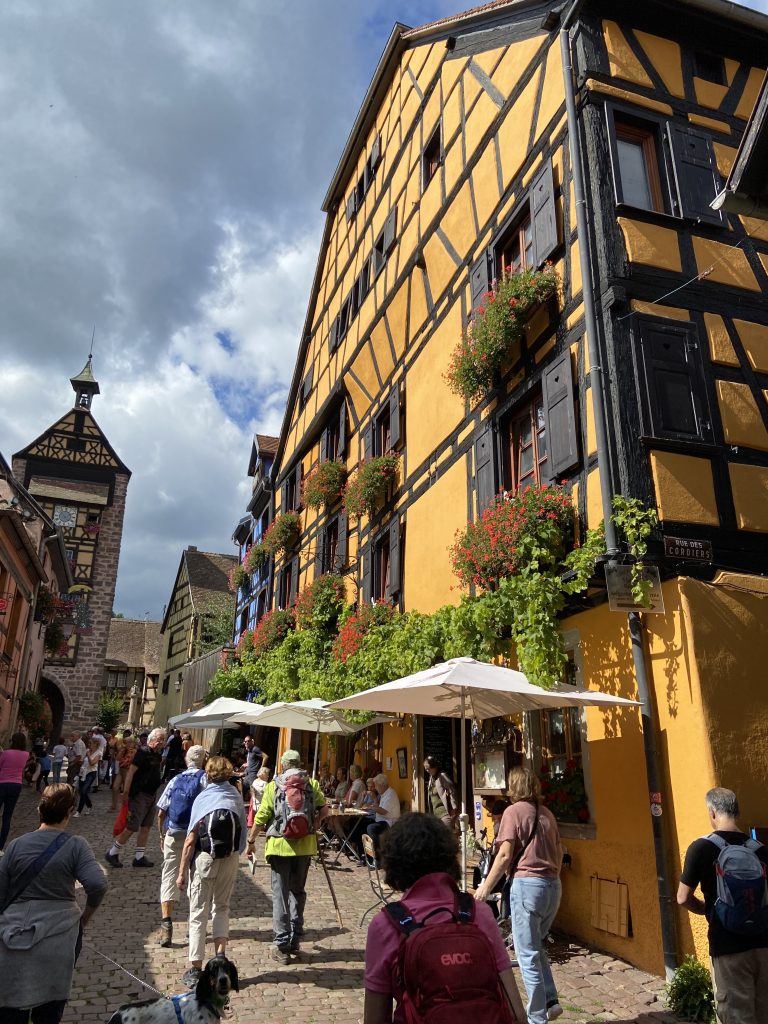
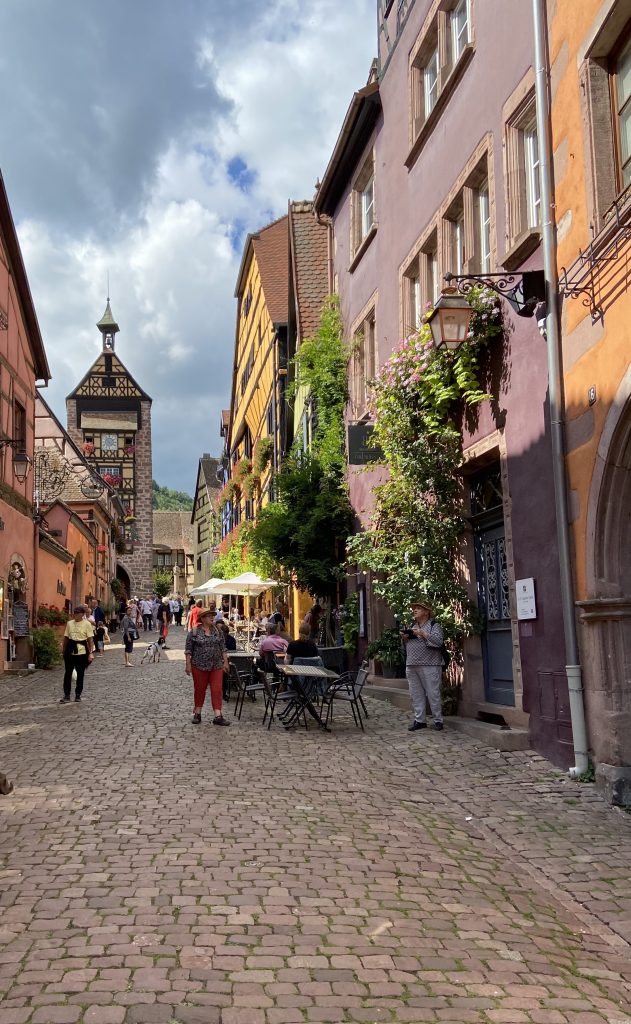
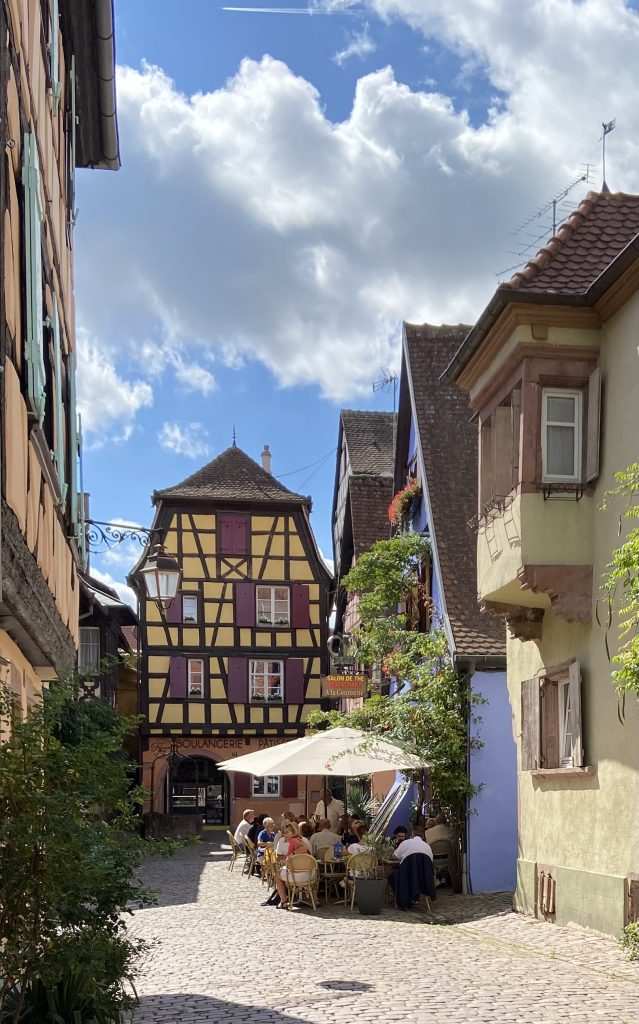
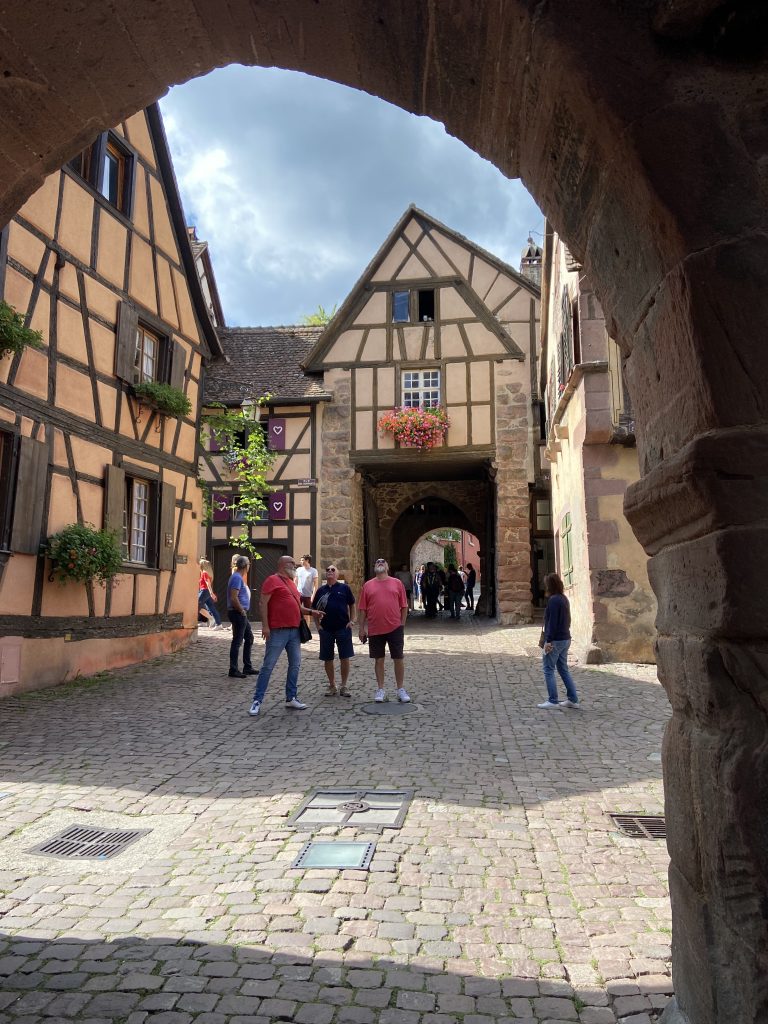
We had a mediocre lunch of Tarte Flambé. It is an Alsatian speciality. Similar to a very thin crusted pizza with cheese and bacon bits on it. But there are variations. I got one with chèvre cheese and ham. Luther got one with fontina.
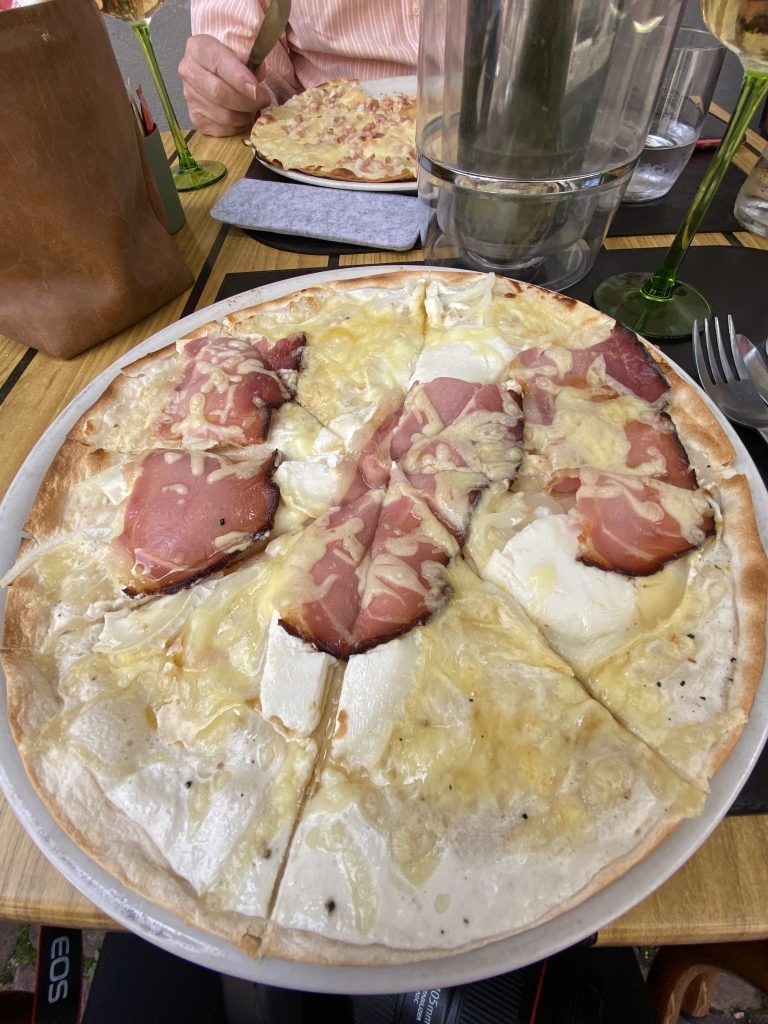
Back at the hotel for catching up with our emails. And this journal. Tonight we wander into town and see what sort of restaurant we can find.
~~~~~~
We decided to eat at La Dime. It is a traditional Alsacien restaurant with all the usual dishes. We know from experience that the portions are large so we just ordered an entrée. I got the entrecôte with frites. Luther got the cordon bleu. They were OK. It was a big place with a real crowd. Most people were locals, so I guess this is what they like.
We walked back and sat in the garden at the hotel so Luther could smoke a cigar. The moon was rising. It was a nice night.

Monday September 12
We woke up a little late and didn’t go out for breakfast. I was able to make coffee in the room. At around eleven we walked in the other direction from how we had been walking towards the edge of town. Our mission – a wine tasting at Robert Blanck winery. It wasn’t a terribly long walk. There were shops to see along the way. I liked this dragon…

When we got there there was a lovely young woman named Valerie, daughter of the owner, who enthusiastically let us taste whatever we wanted. She spoke excellent English and we really enjoyed talking to her. She was so nice we bought six bottles of their wine.
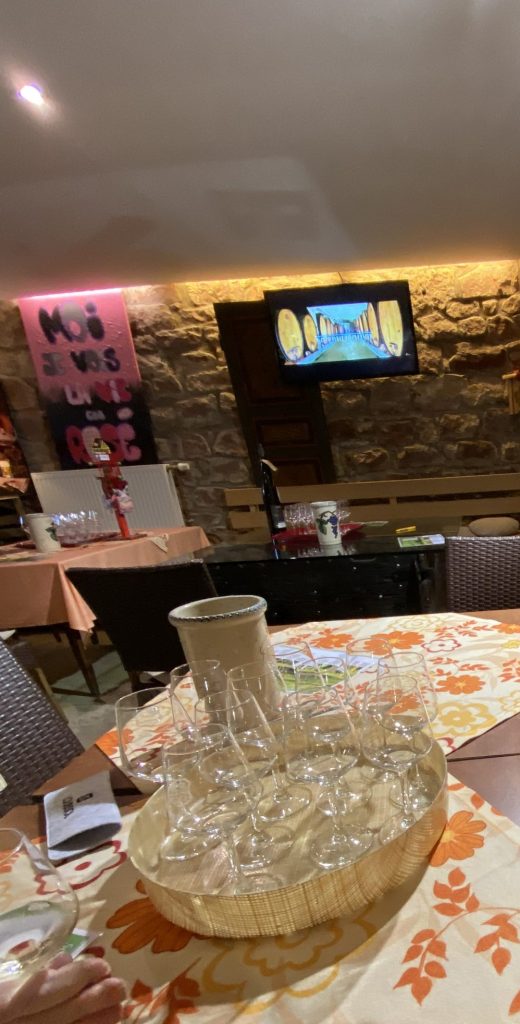
The winery has 40 hectares of vines. And produces 120,000 bottles in a normal year. The property is spread around in small bits and pieces because the inheritance laws are set by the Germans. First you need to understand the history of the Alsace. They have flipped between masters over the centuries. Germany, France, Germany, France. The border, when Germany owned them was the top of the mountain range called the Vosges. When it was owned by the French, the border was the Rhine river. The region has its own language, Alsatian. It sounds much like German. Anyway, the inheritance laws allowed multiple heirs so the properties were split between them. This makes for smaller properties overall. The Blanck family owns acreage in a few different places nearby. The inheritance laws in France say the entire property goes to the firstborn son. So the property stays intact and the vineyards there tend to be large with the Chateaux for the owners. Except in Burgundy, but I won’t go there now. 🙂
So after that fun outing we walked back, left the wine at the hotel and went into town. There are no really highly rated restaurants in Obernai. We chose one but it was full. So we just went to the first place with tables free. It turned out to be good enough. Again too much food for me. I got the cod in a crust. It came with a lovely little tower of roasted vegetables, and a nicely done tagliatelle in pesto. I was craving pasta 🙂. Luther got the tart flambé again. This time with Munster cheese. The really stinky cheese they make here.
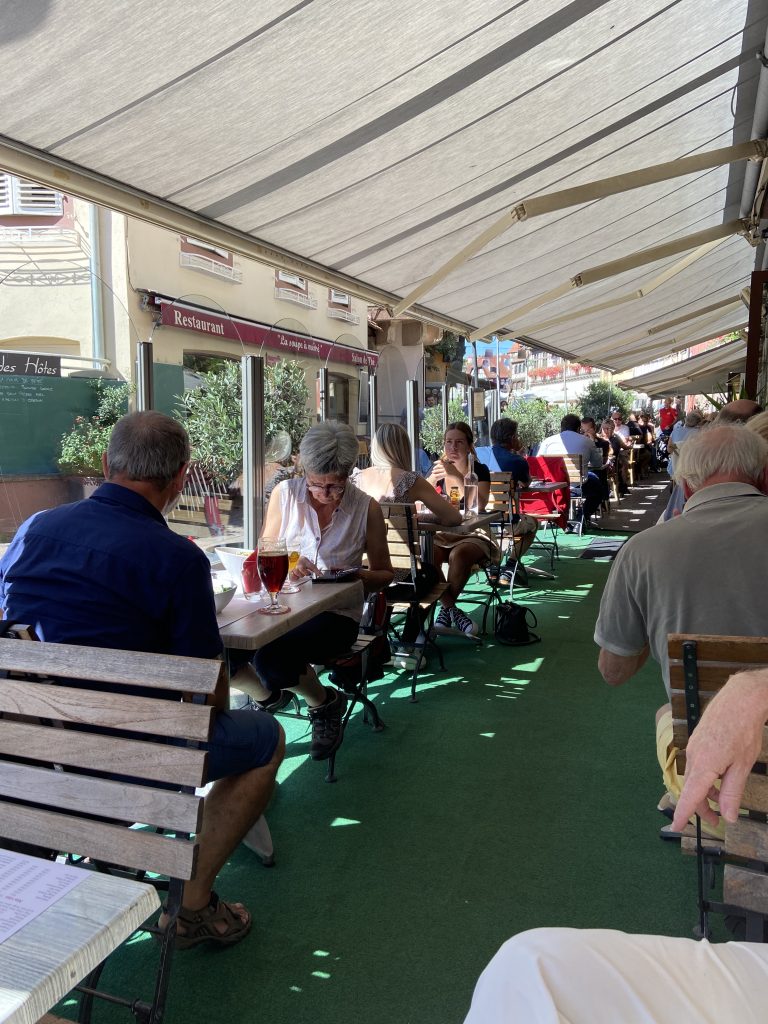
The hours here don’t make any sense. The lunch starts at 12:00 and ends at 2:00. But the shops close from 1:00 to 3:00. At least in Italy the risposto jibes with the lunch hours! So walking back to the hotel everything was closed up tight. Nothing to do be return to the room for naps
Lazy afternoon. We went out and bought a salad for dinner. We needed something lighter. We spent the evening on the terrace. We drank our newly purchased wines. Perfect weather. Tomorrow we head out to our next destination. Herrsching, Germany. A four and a half hour drive.
Stay tuned!

